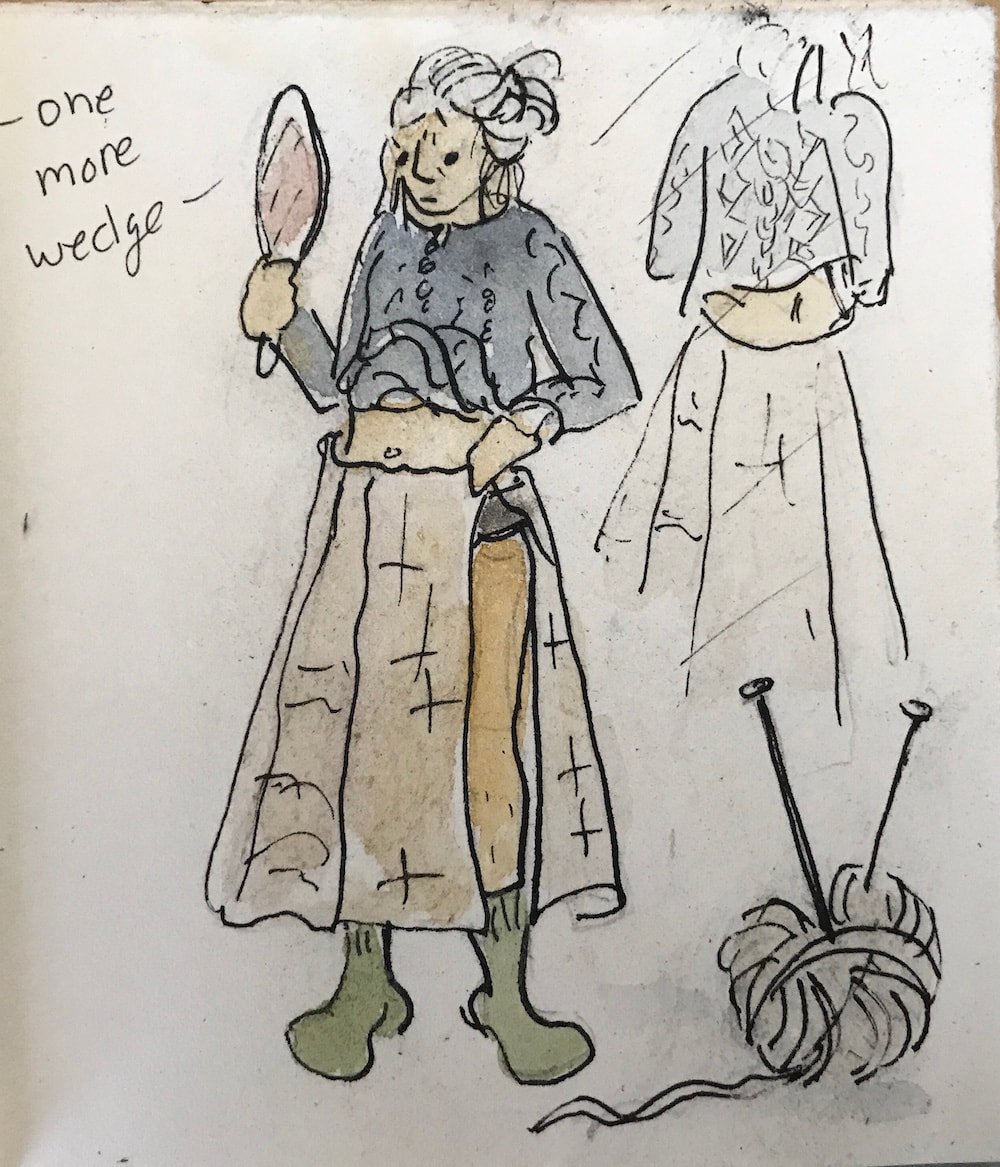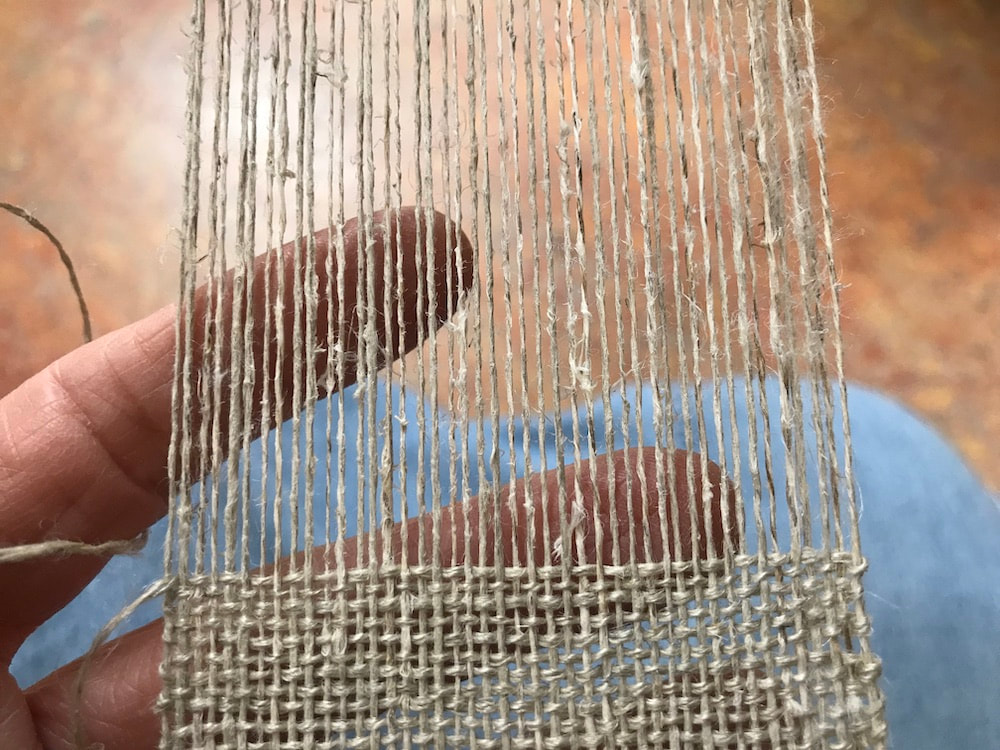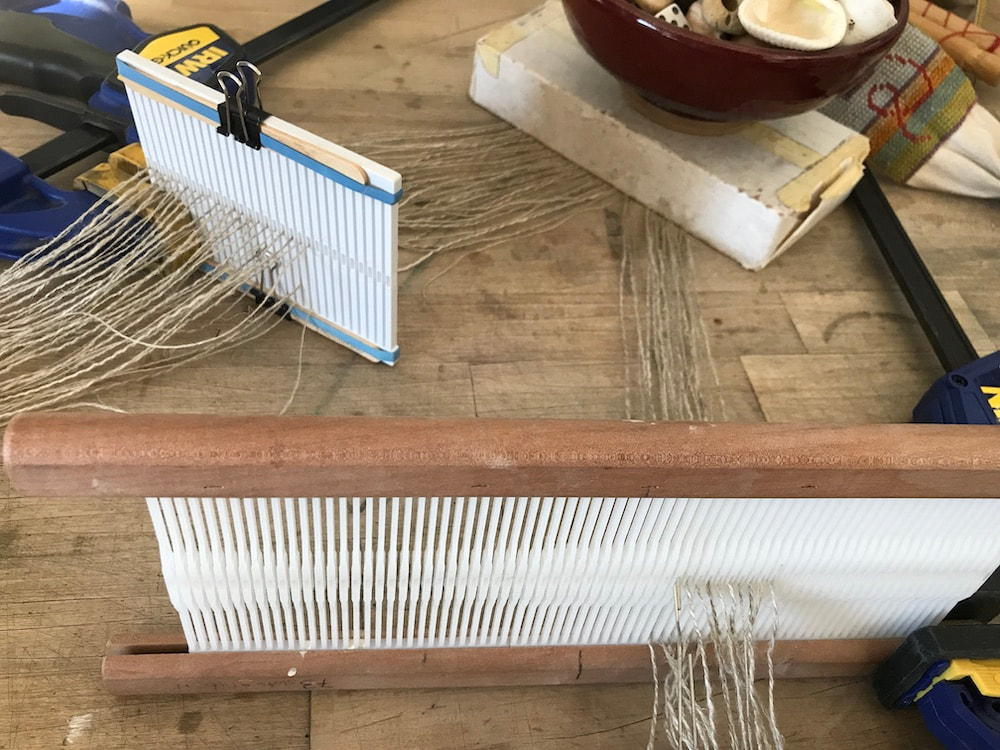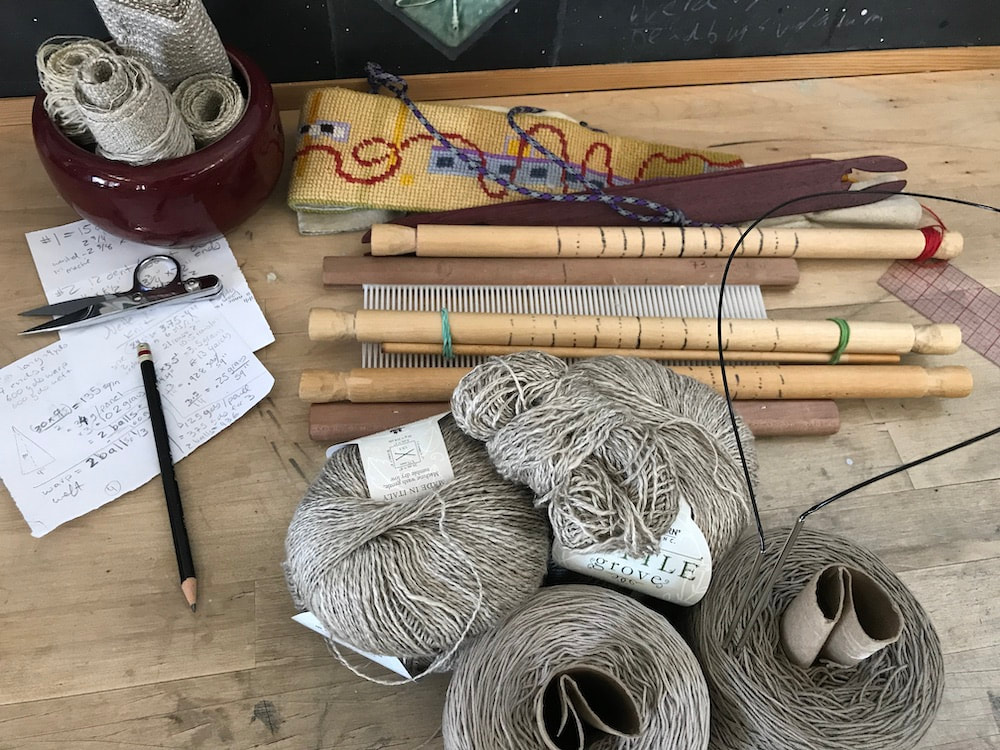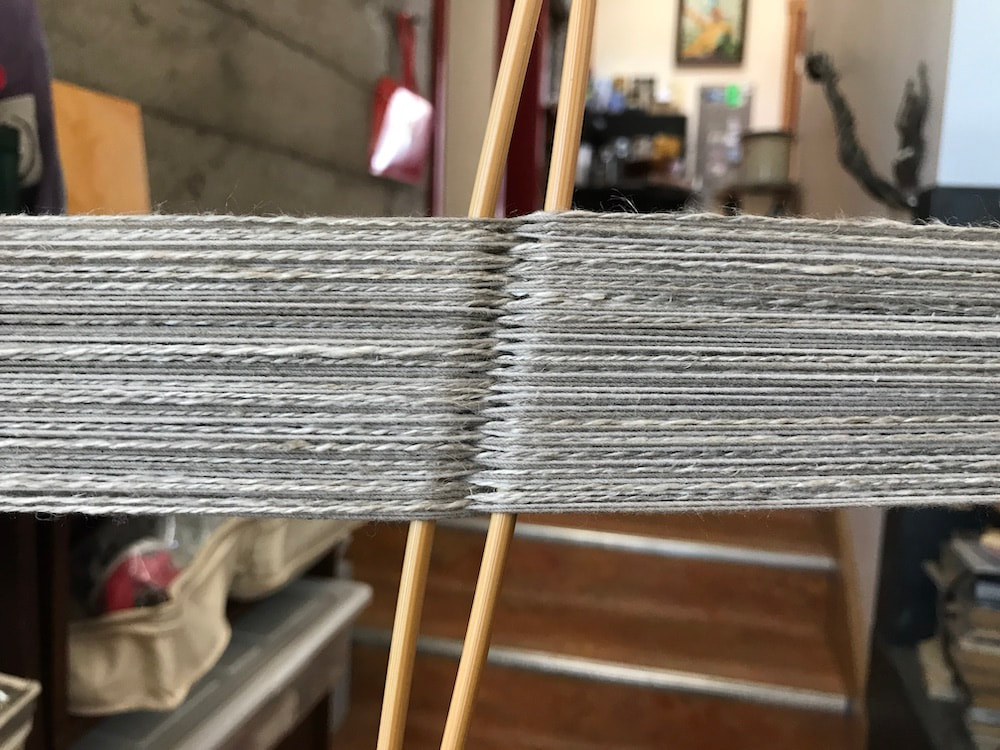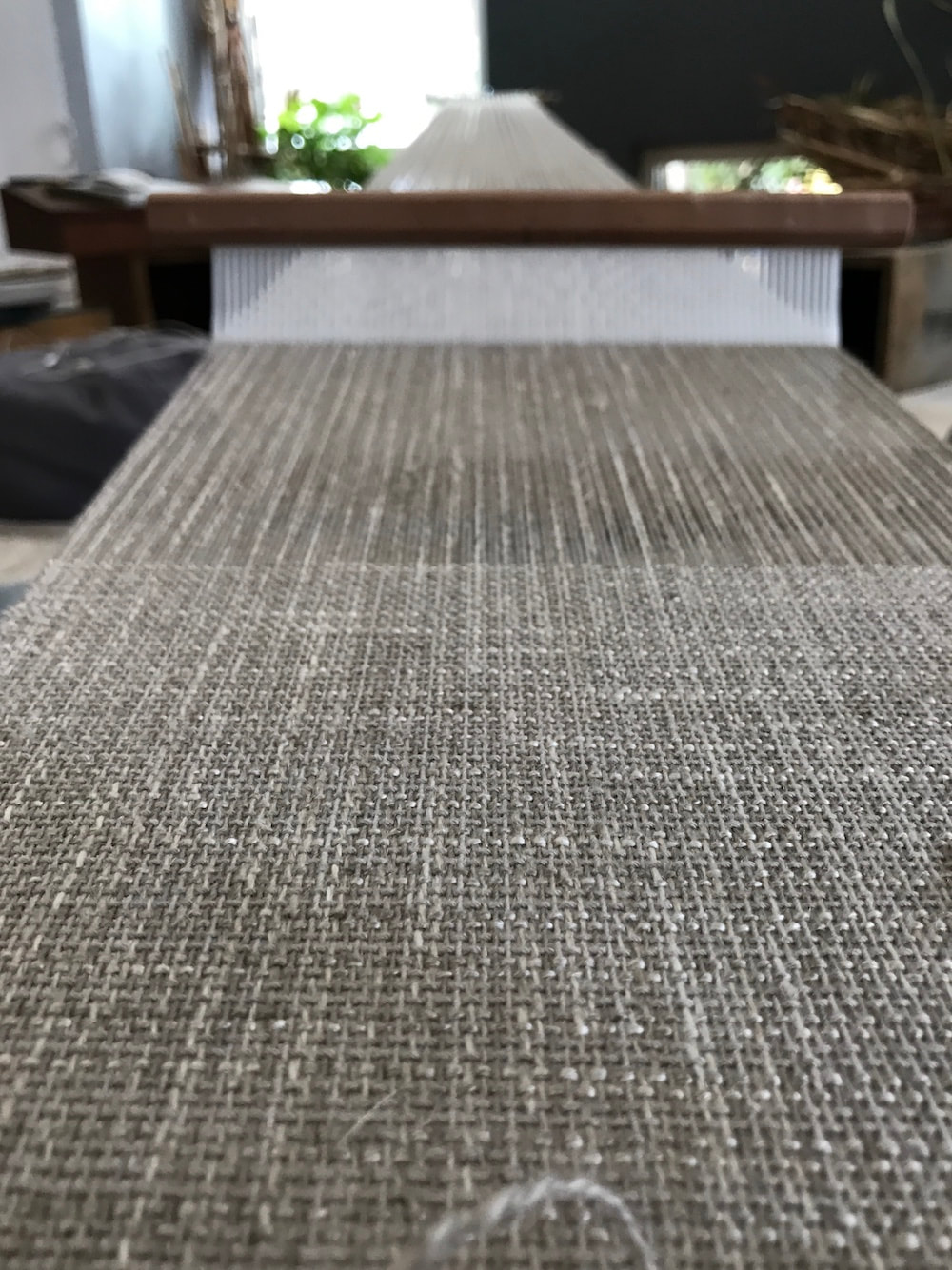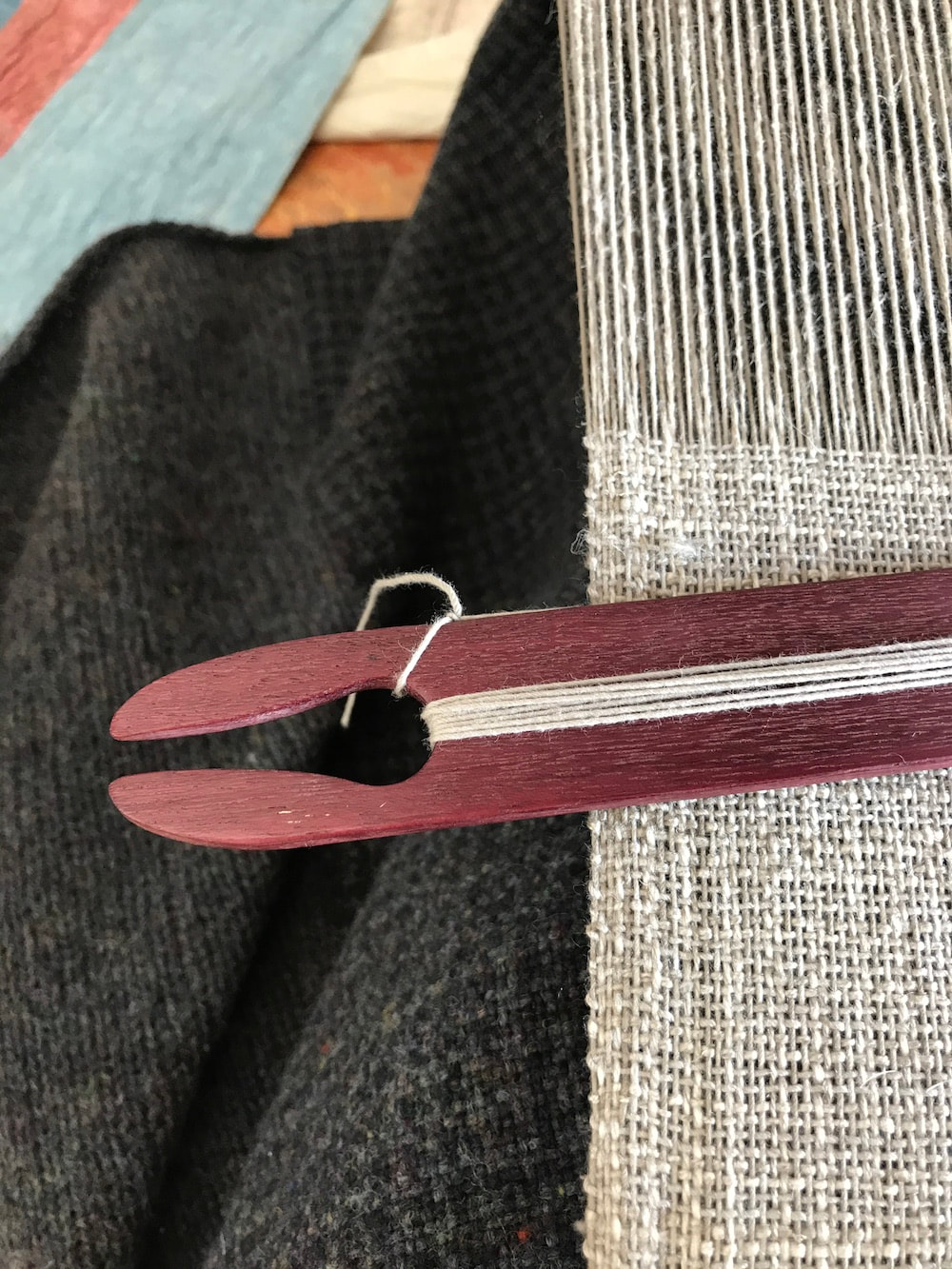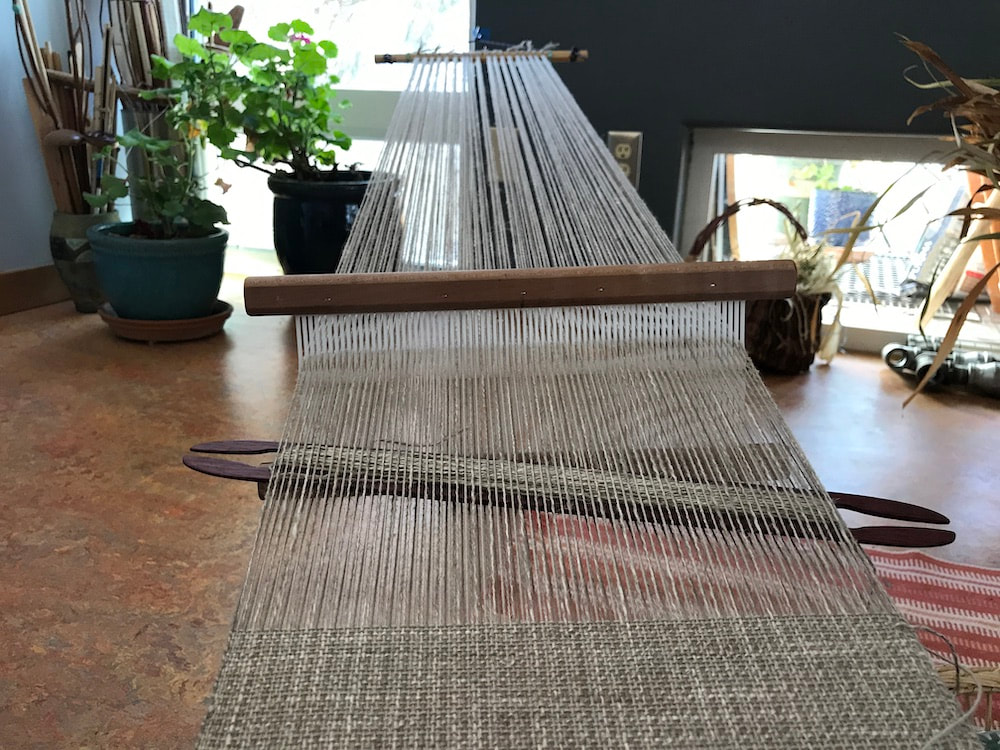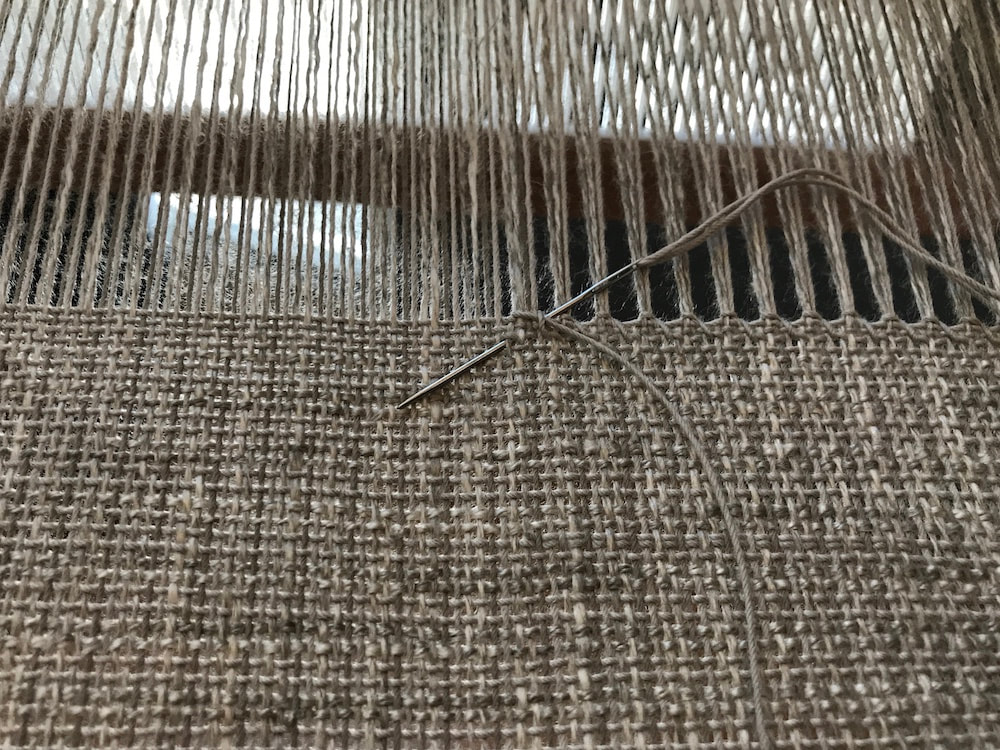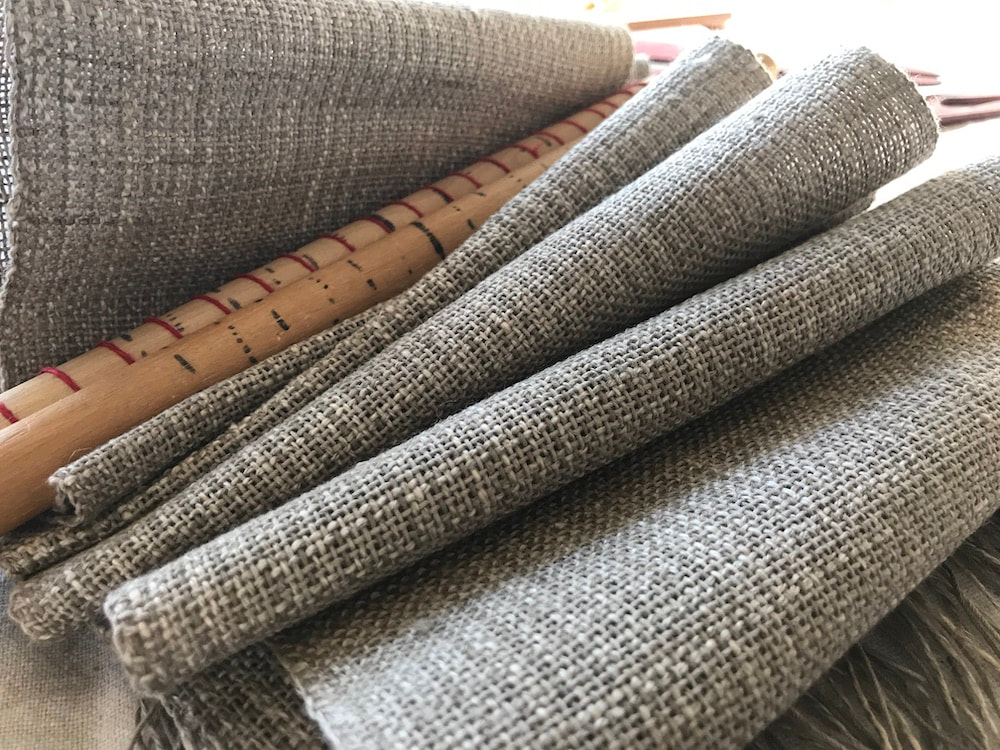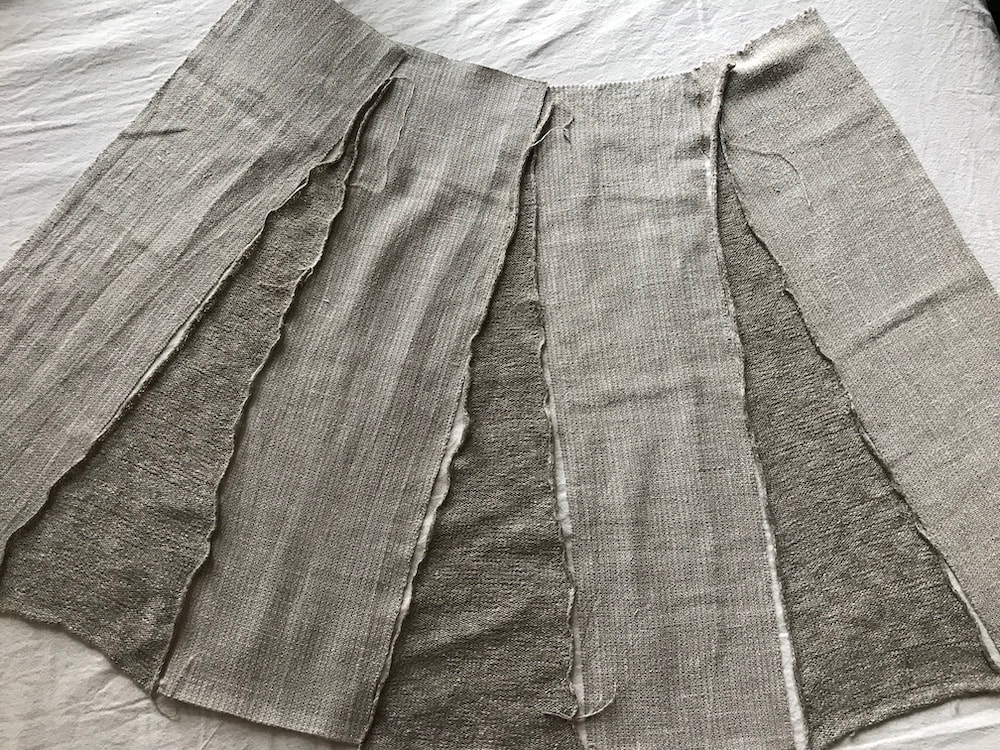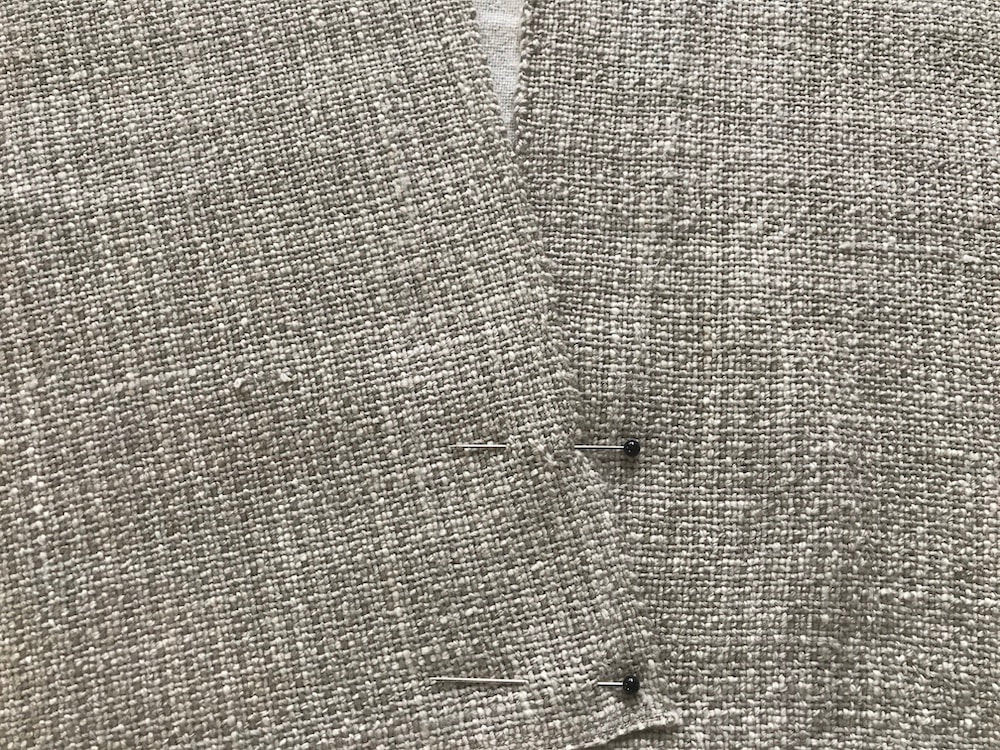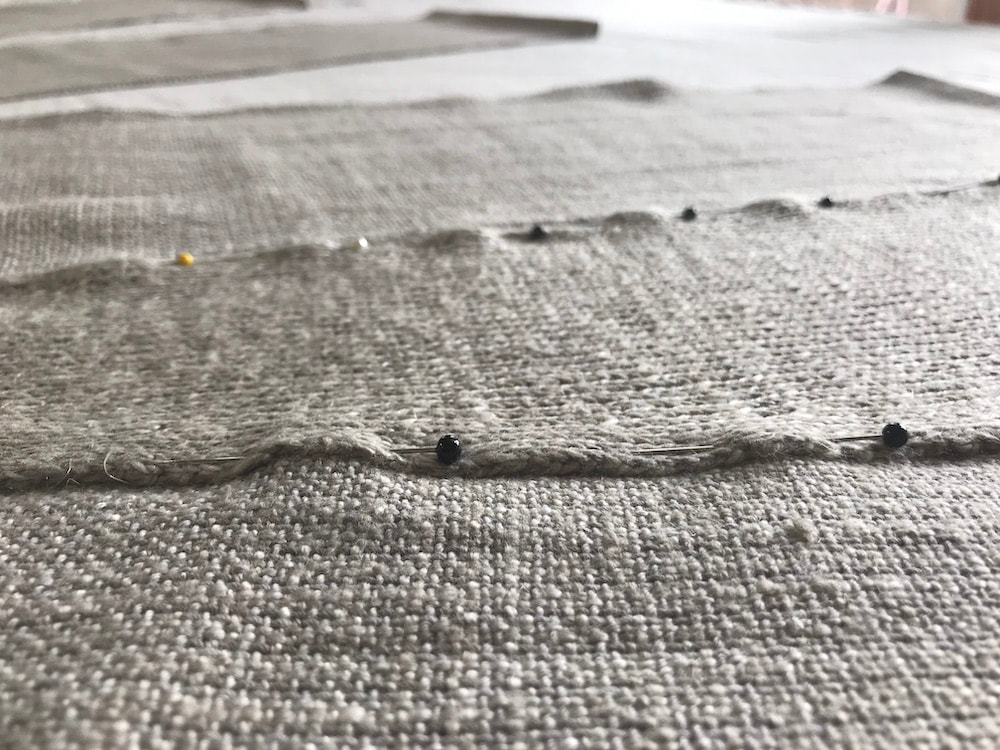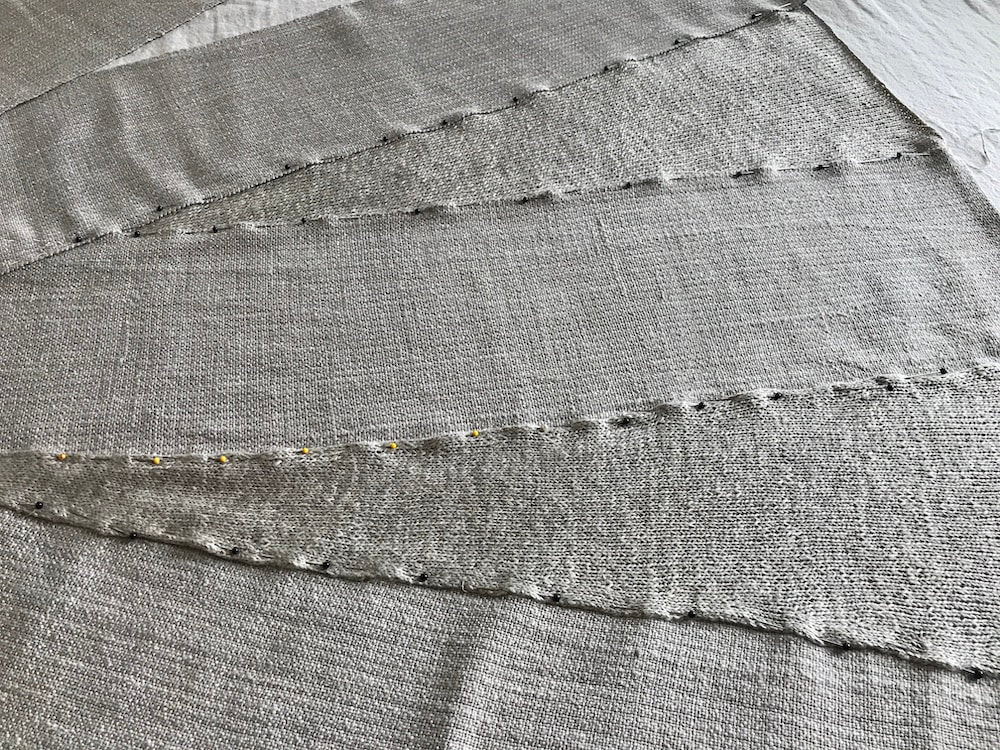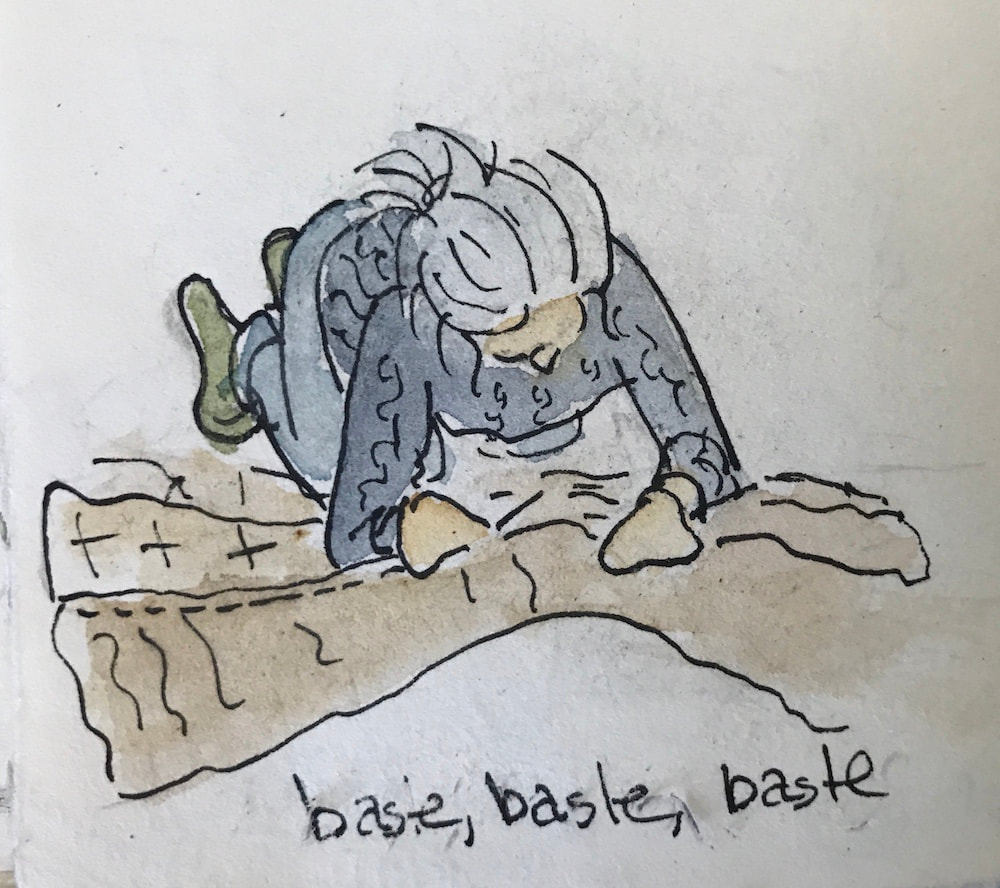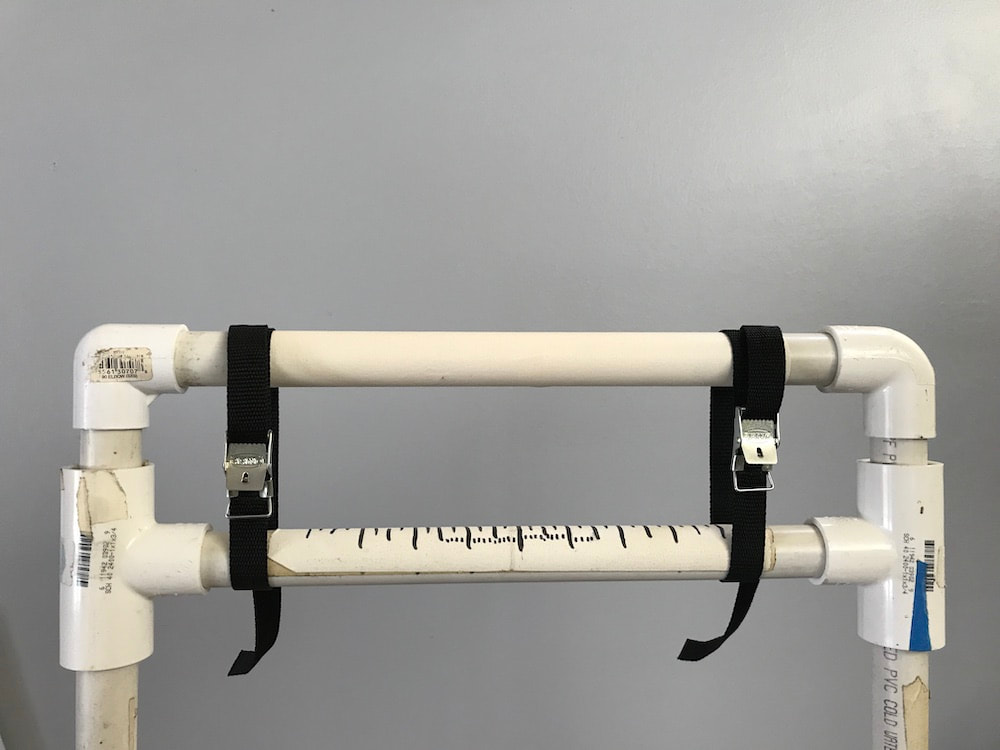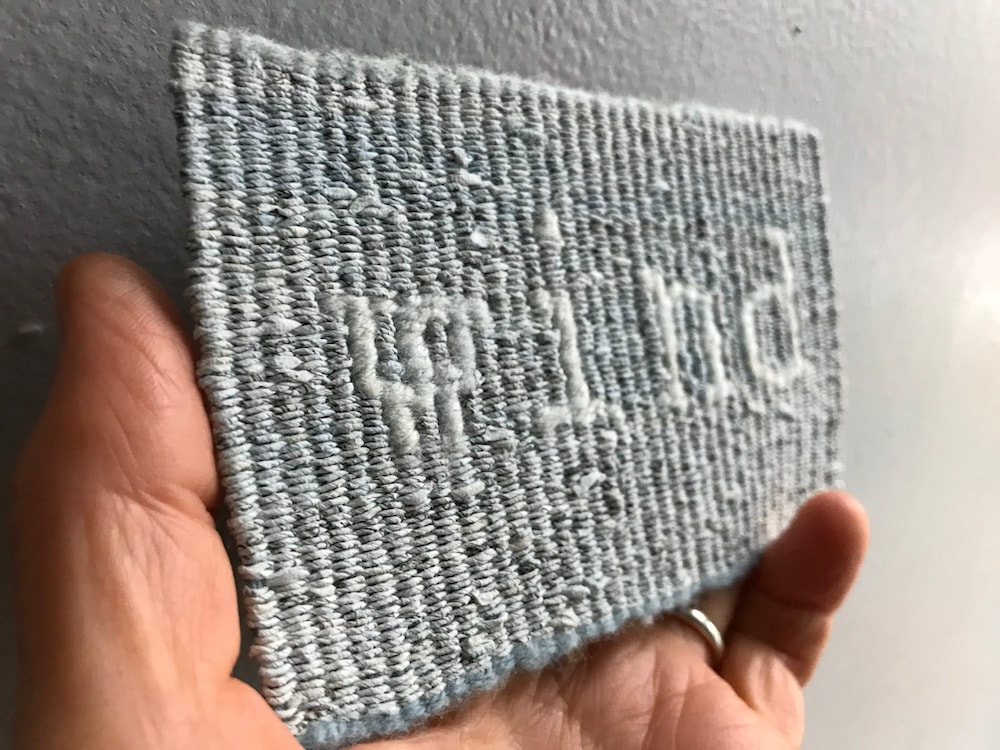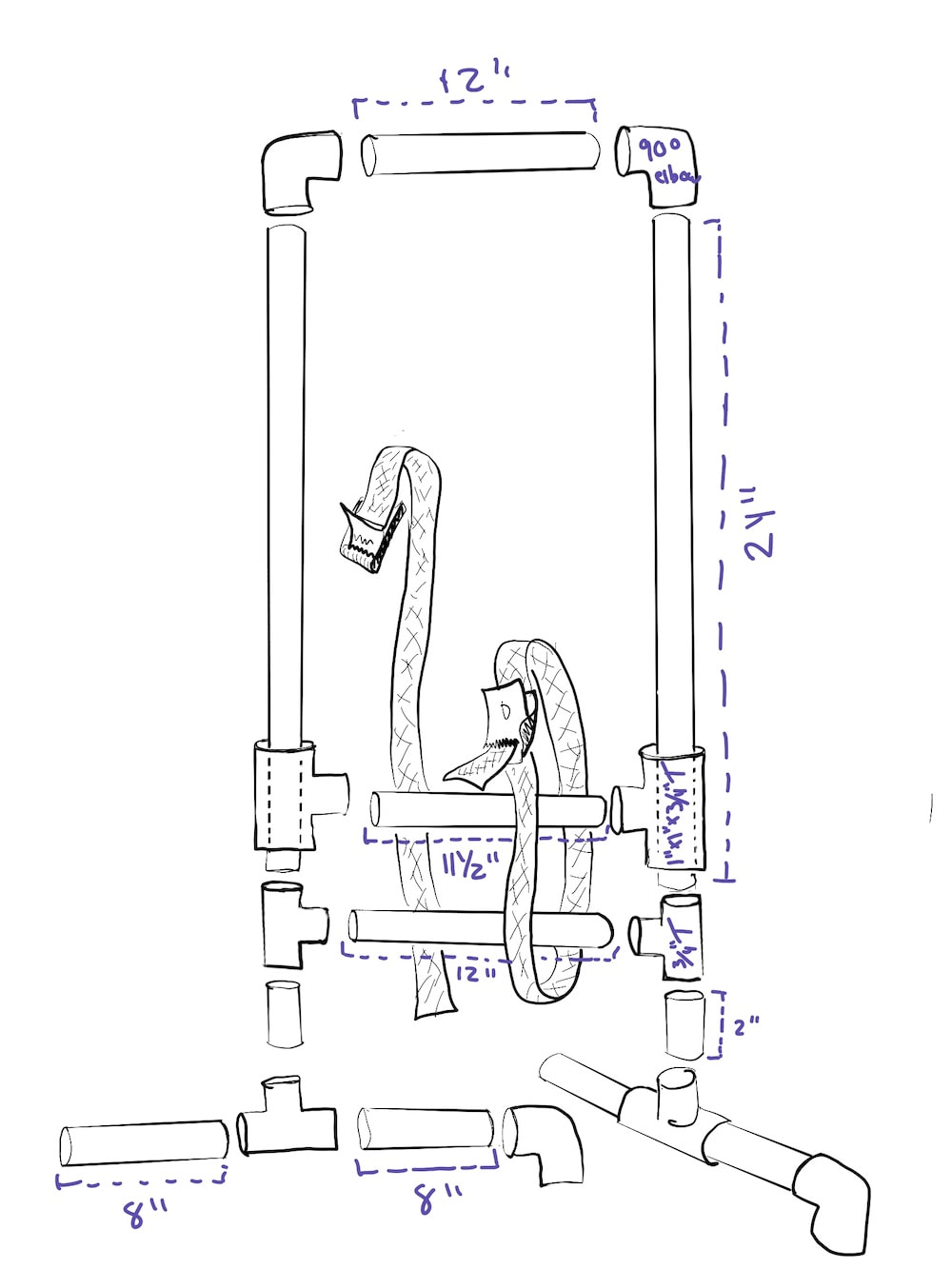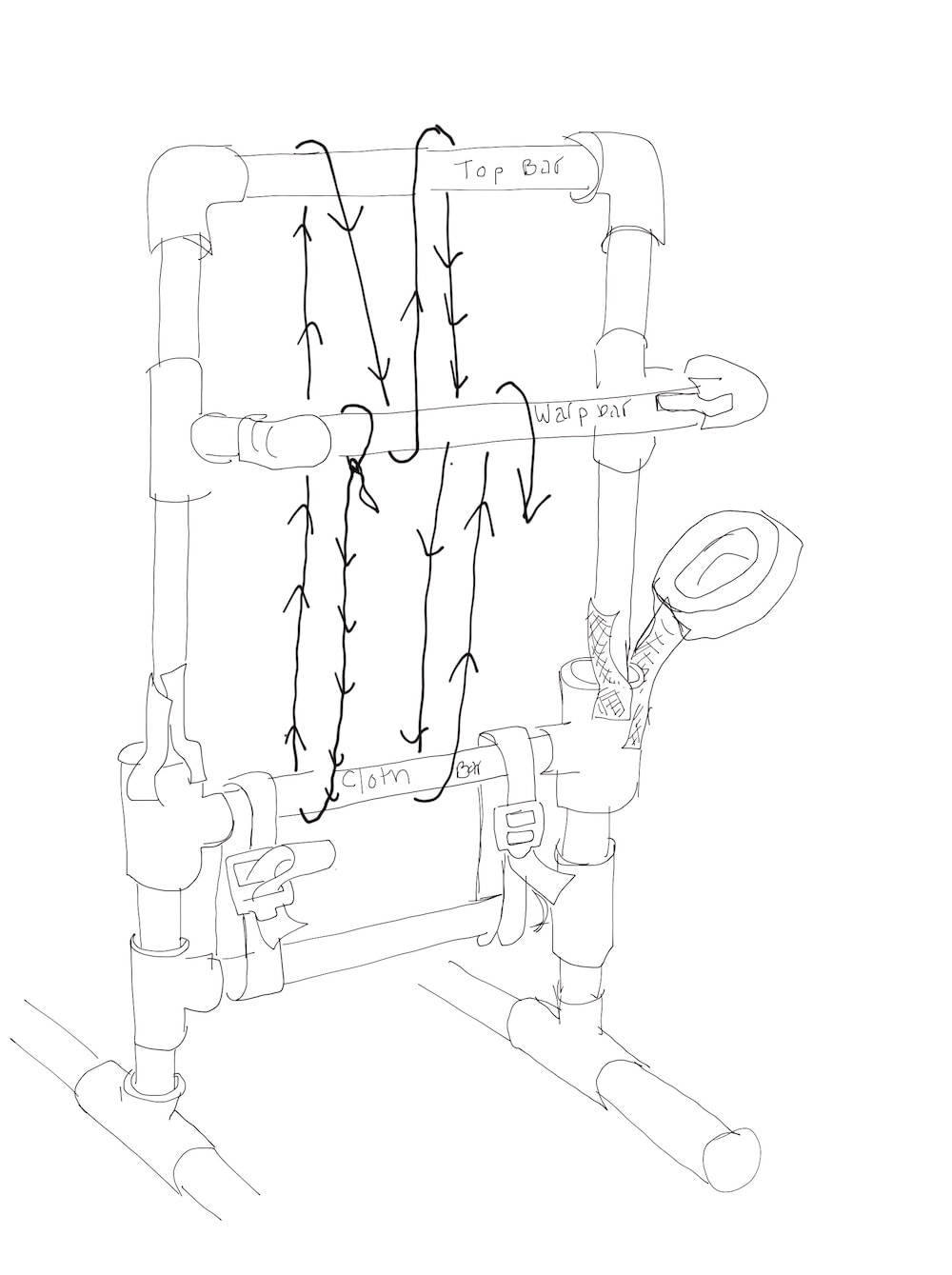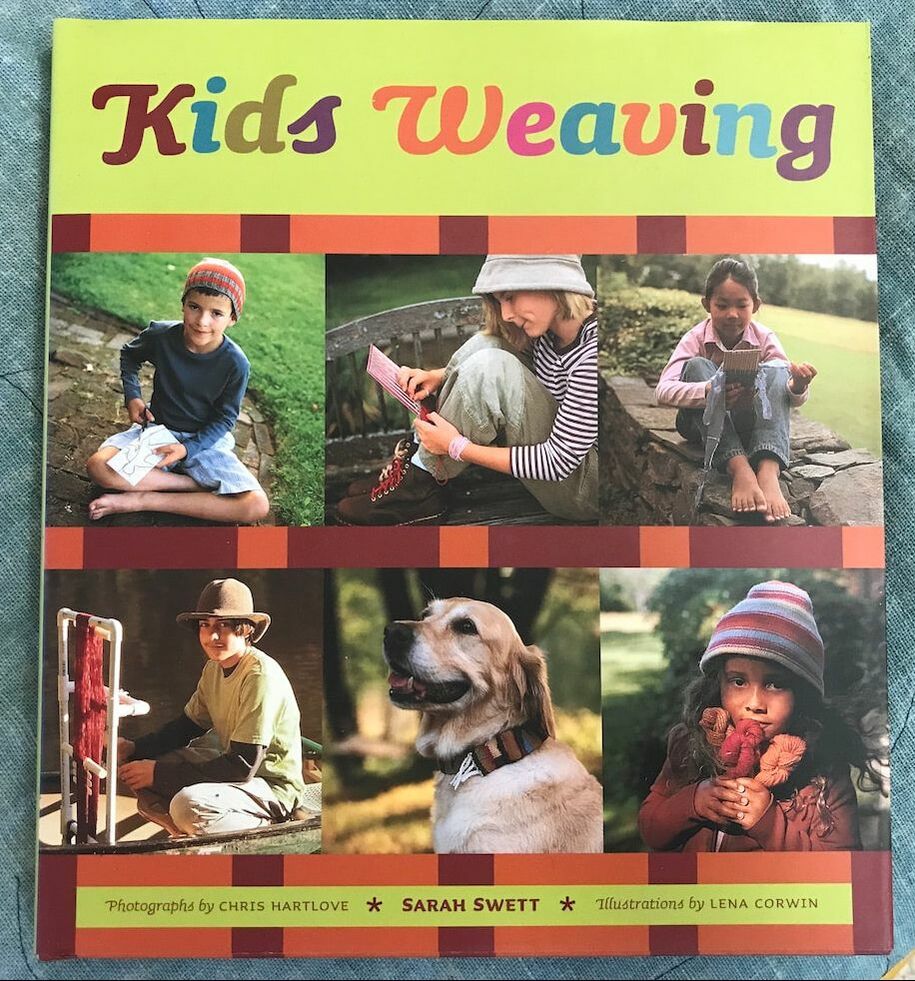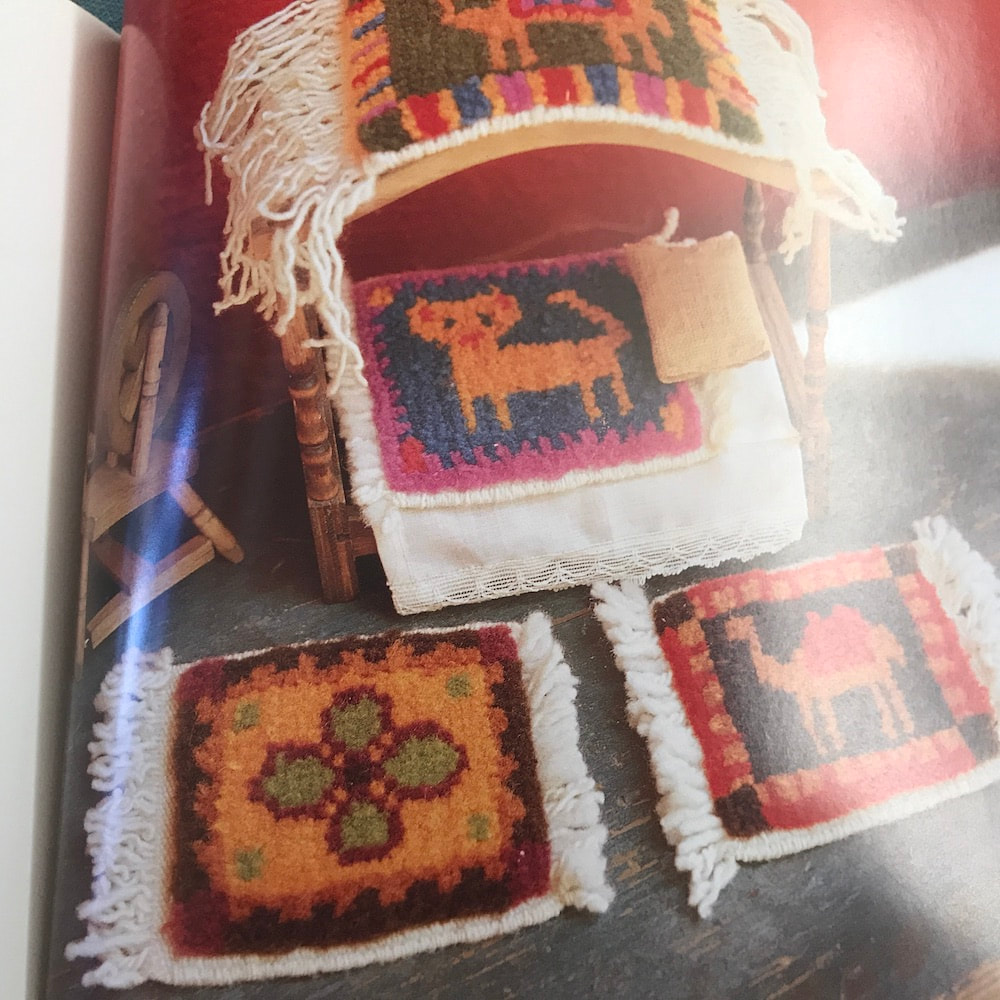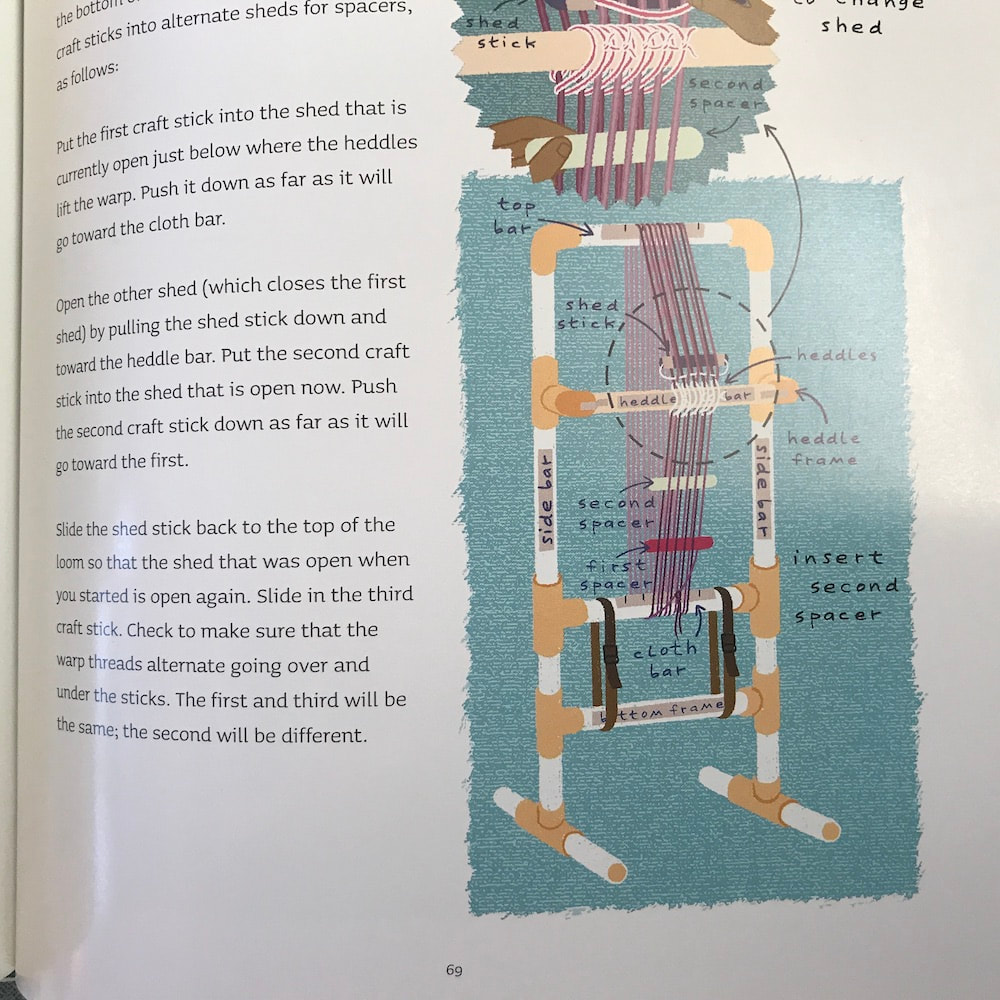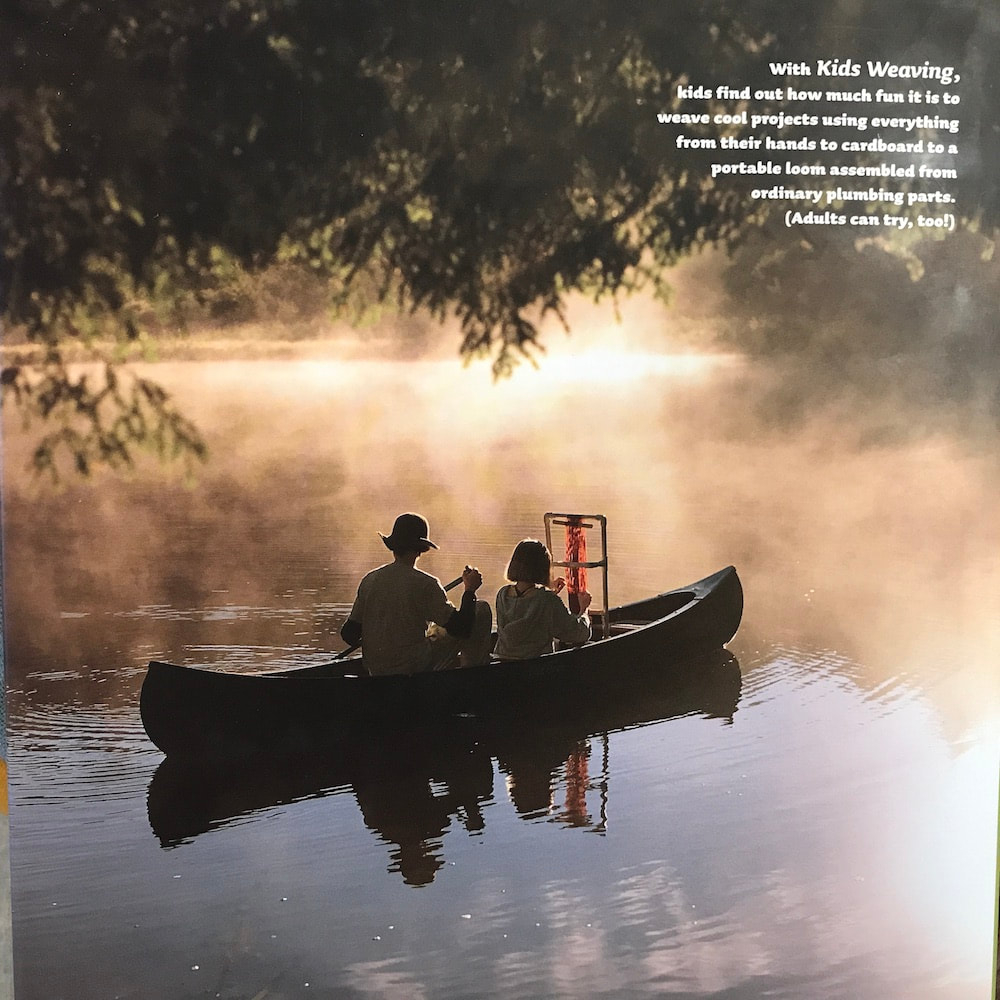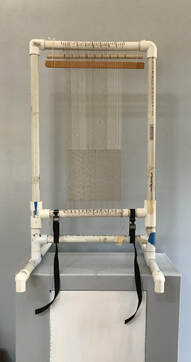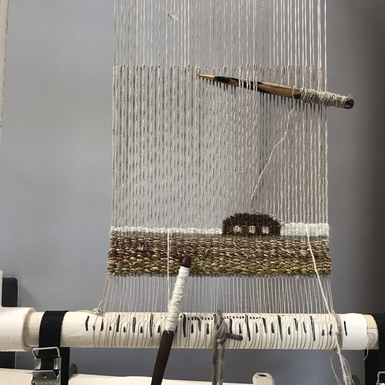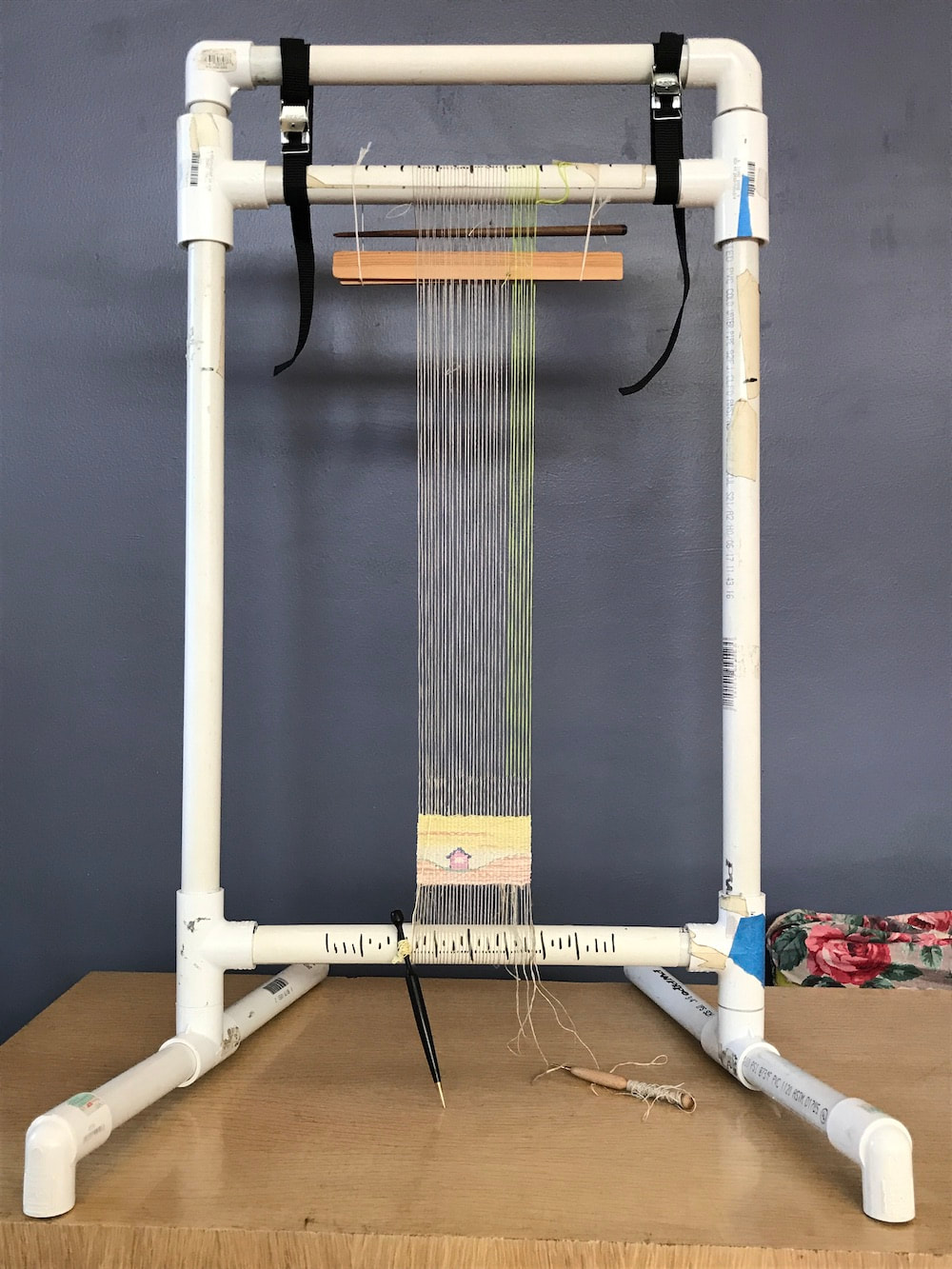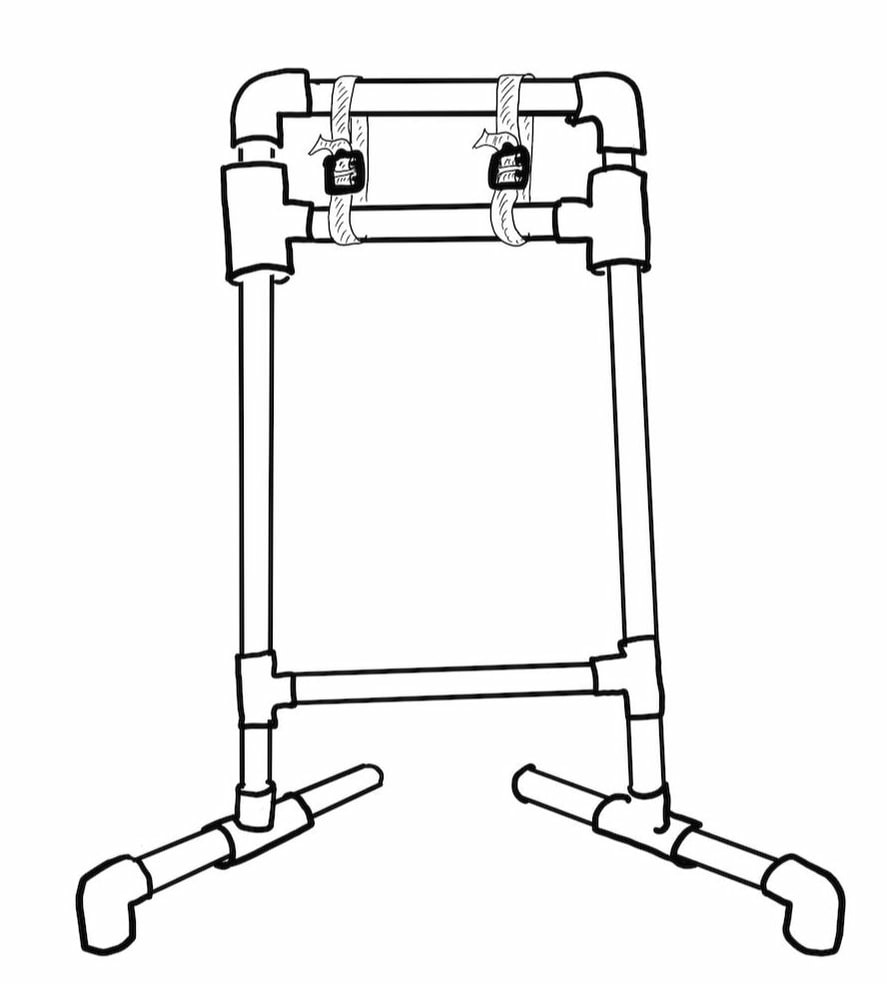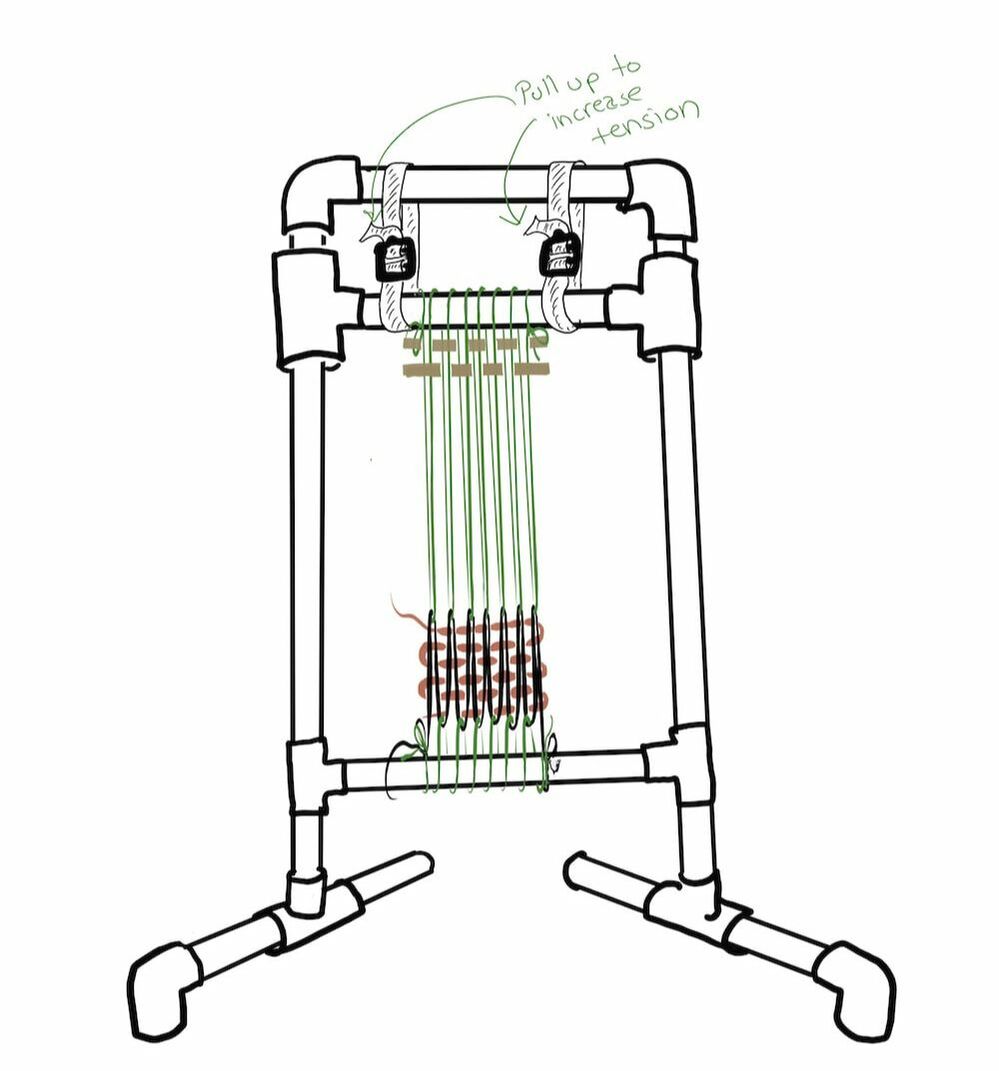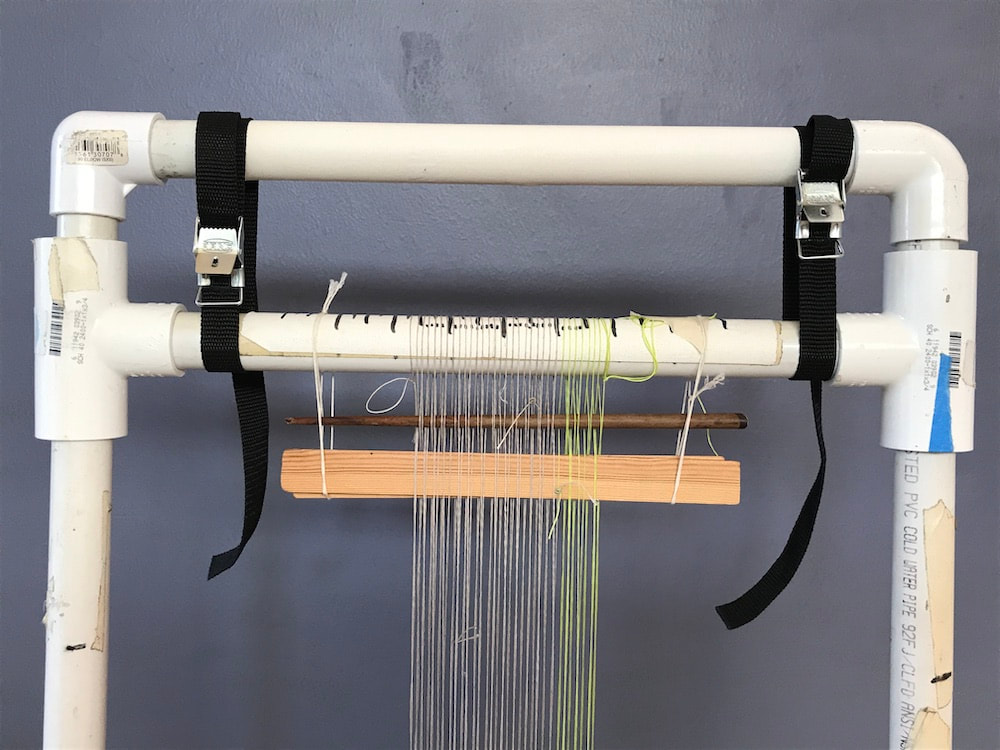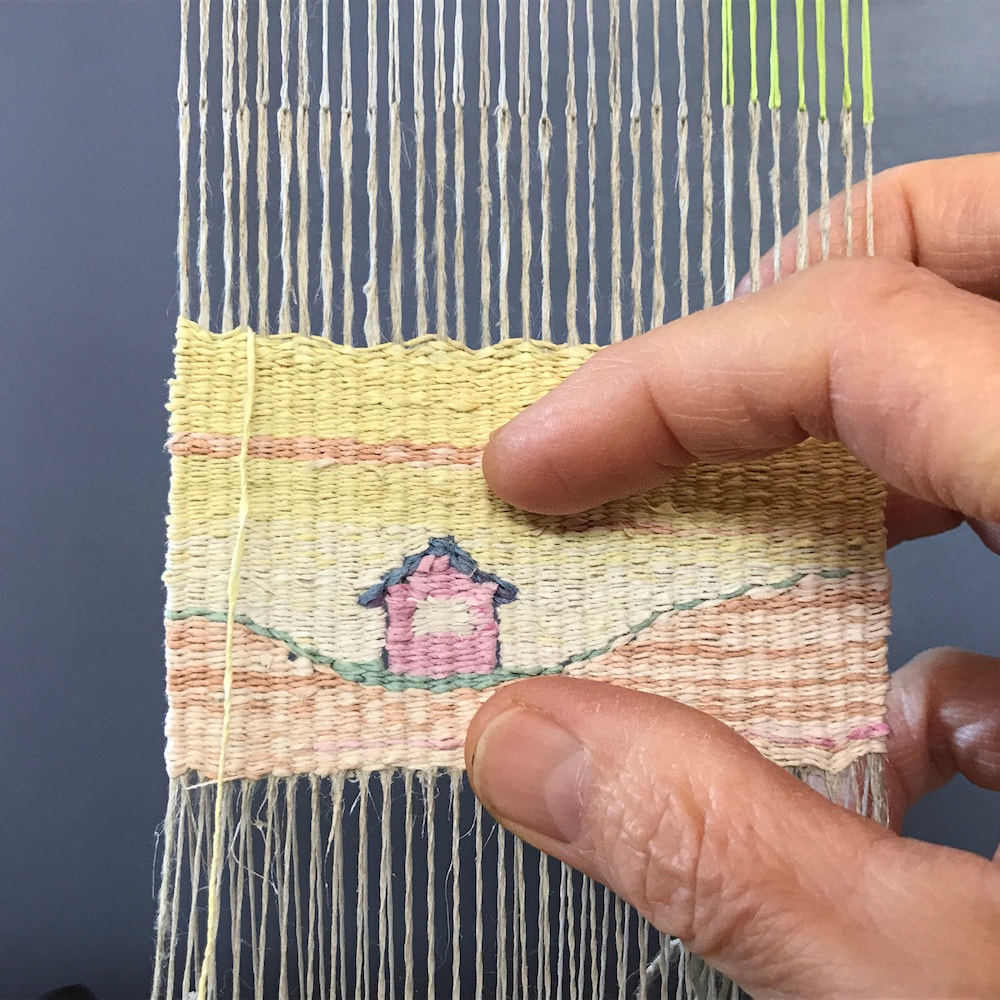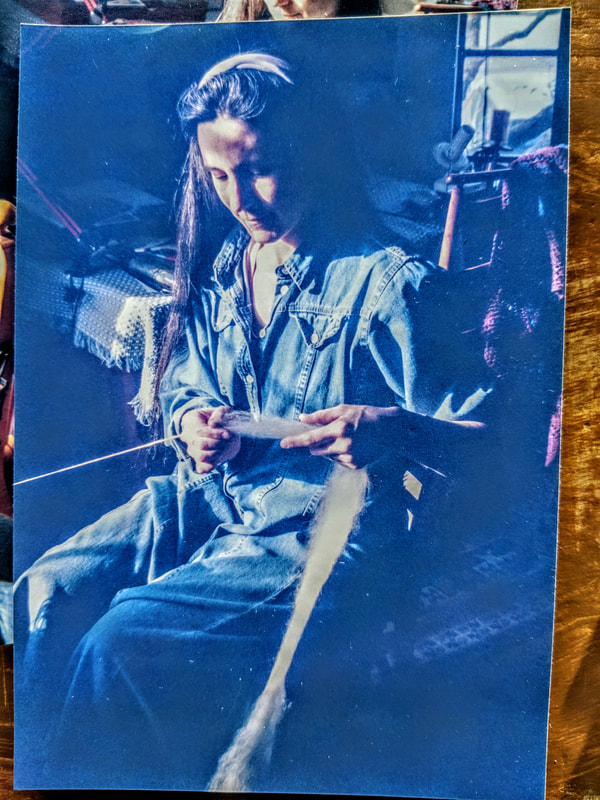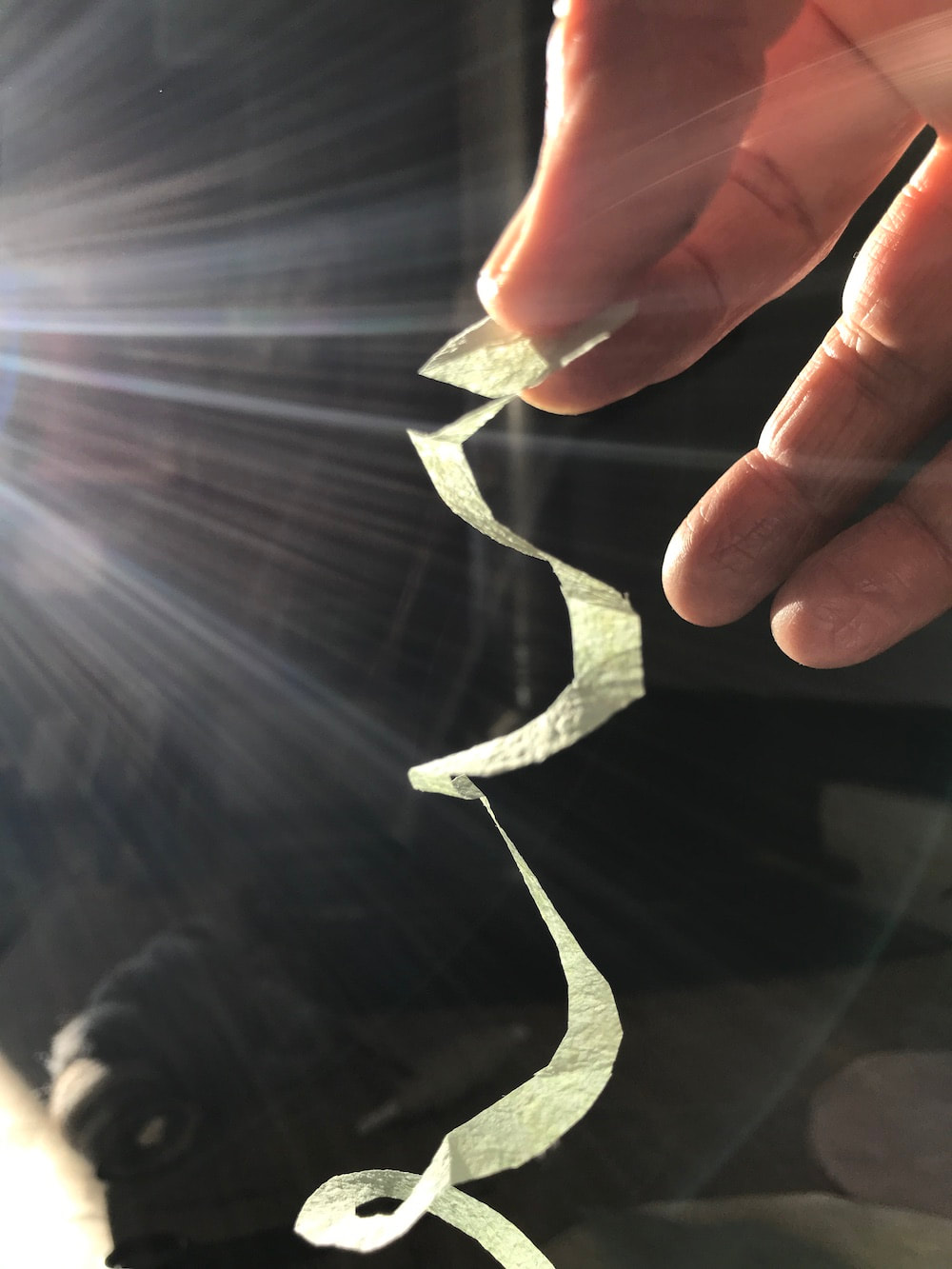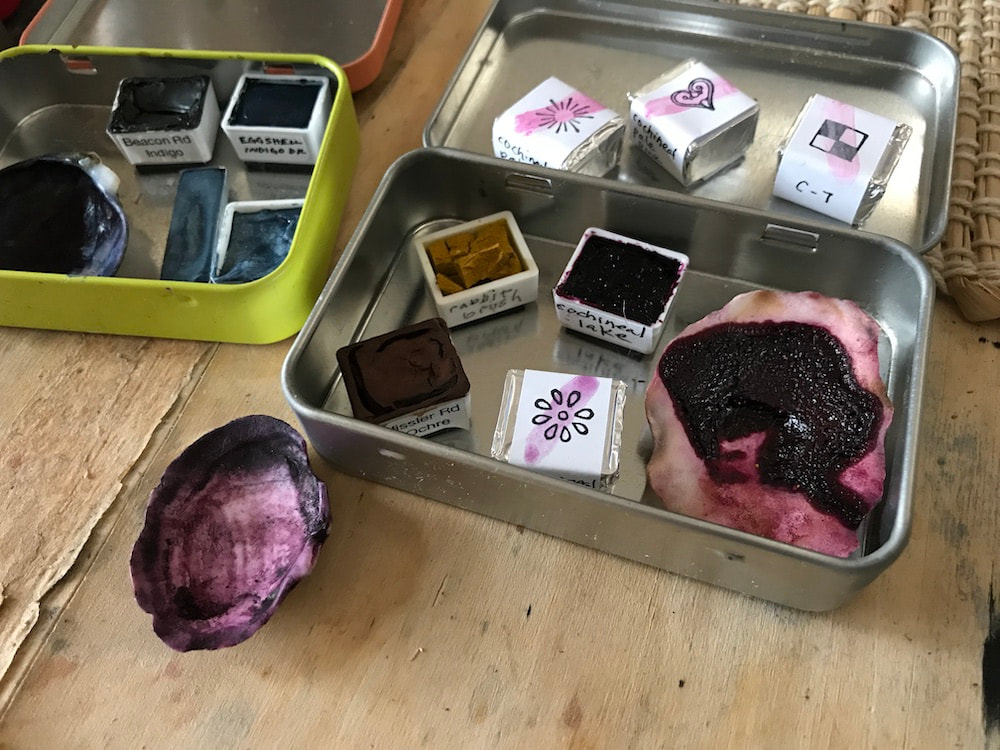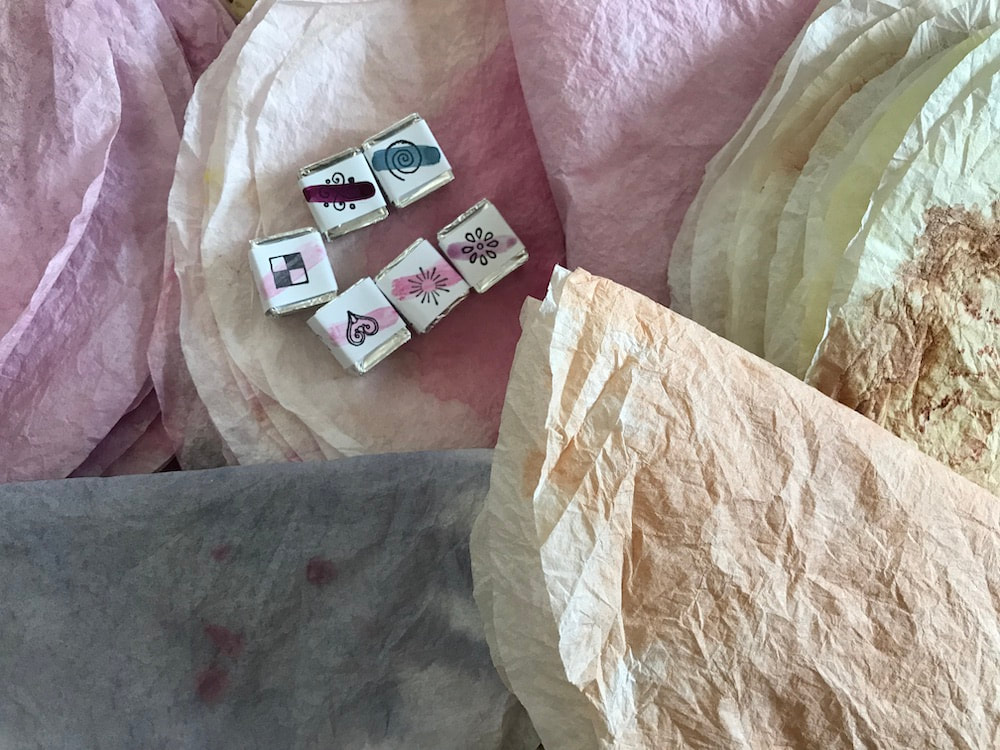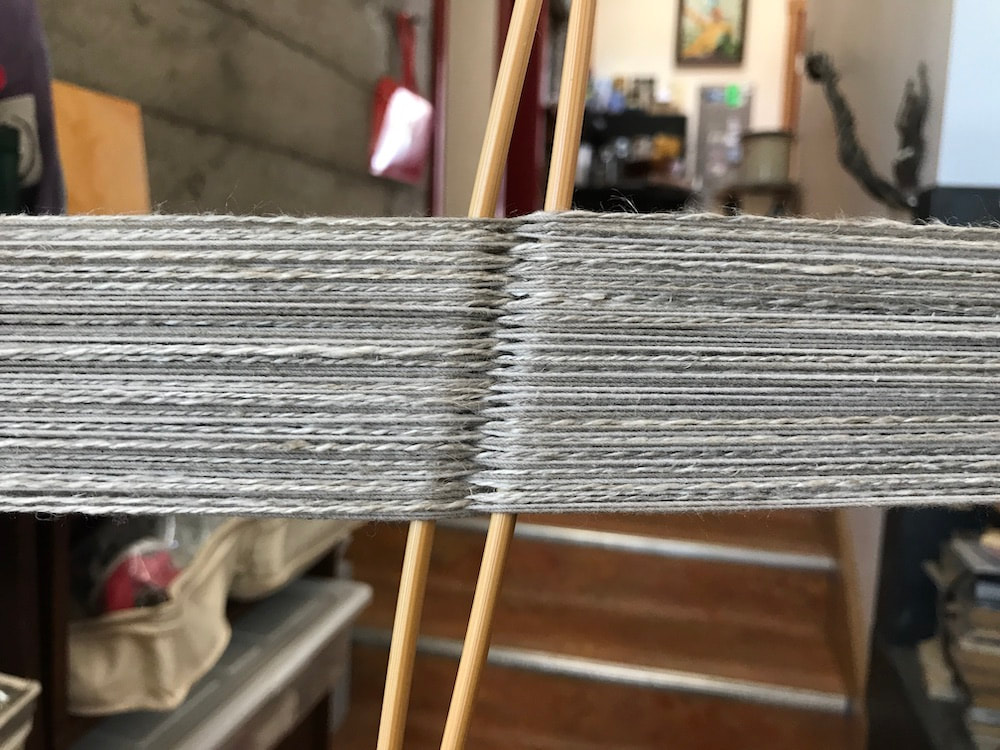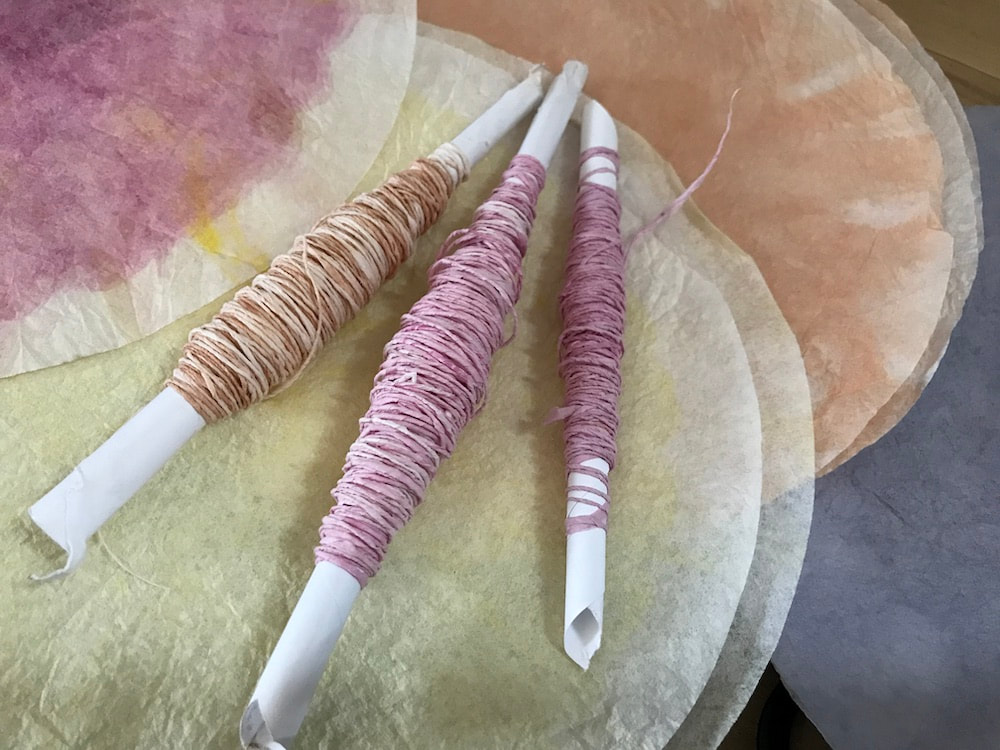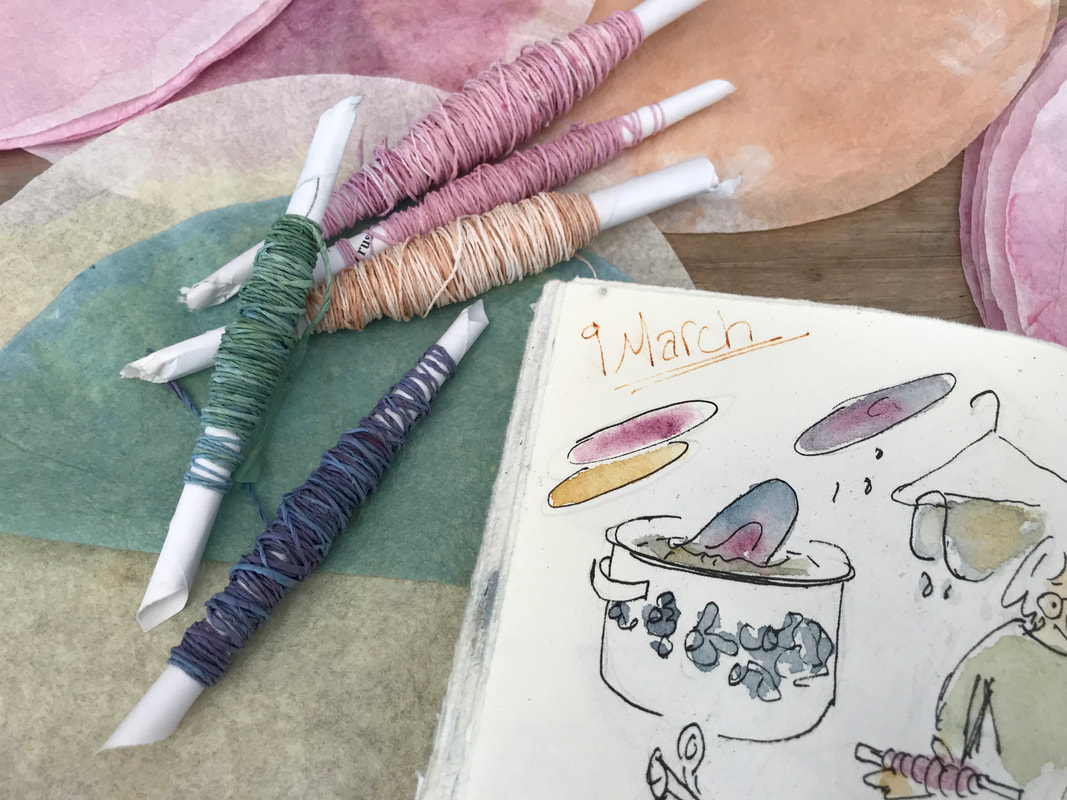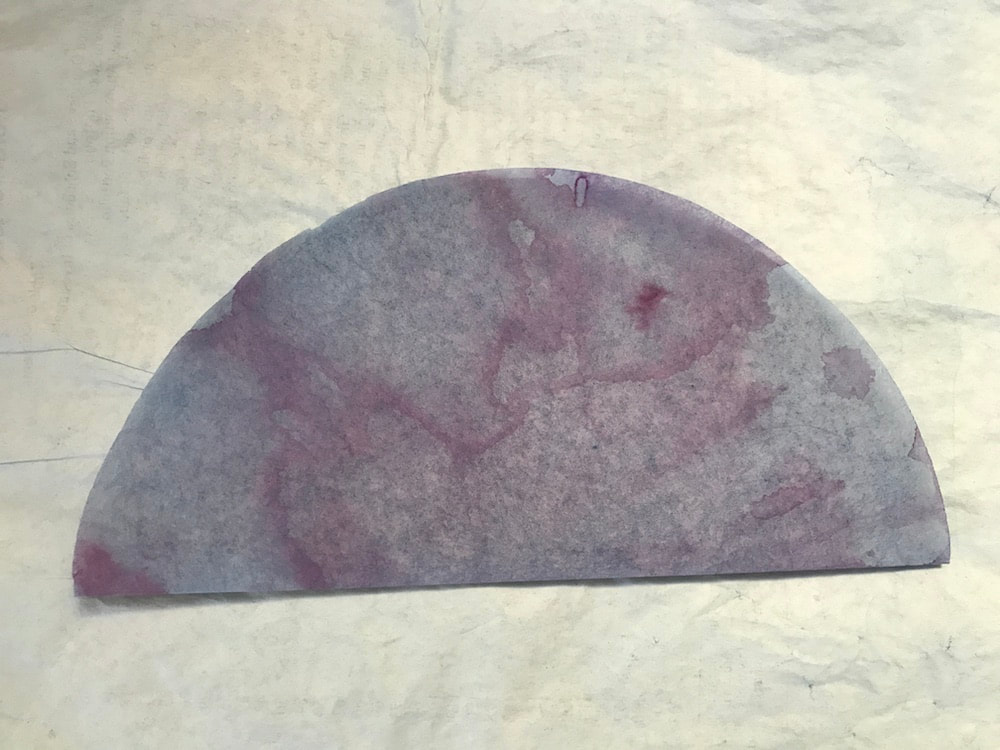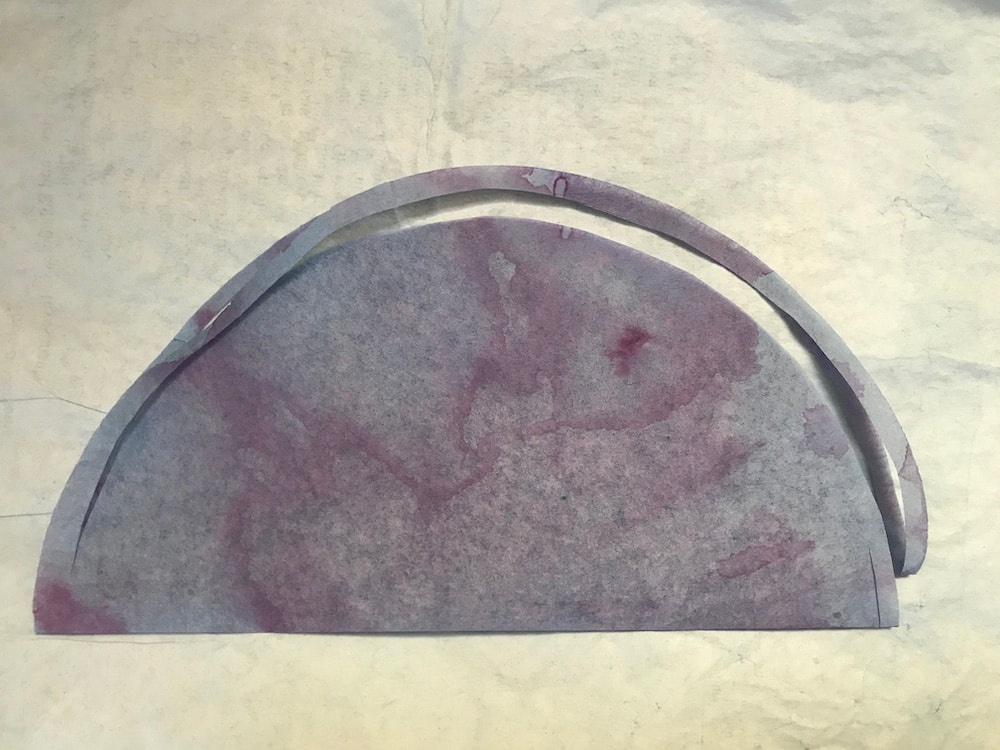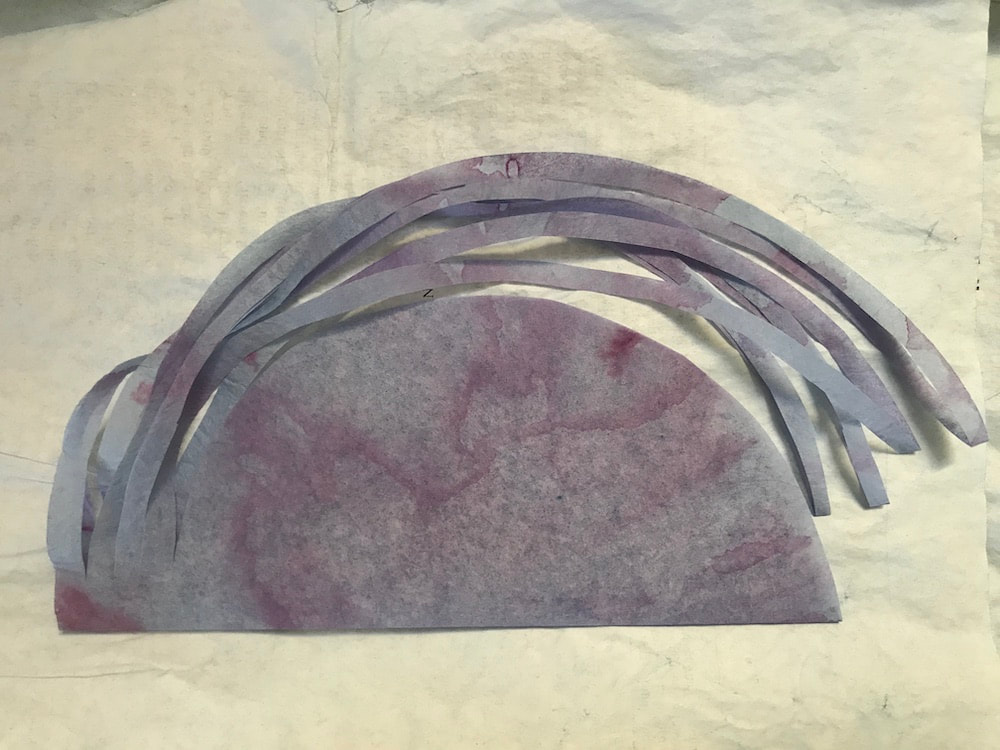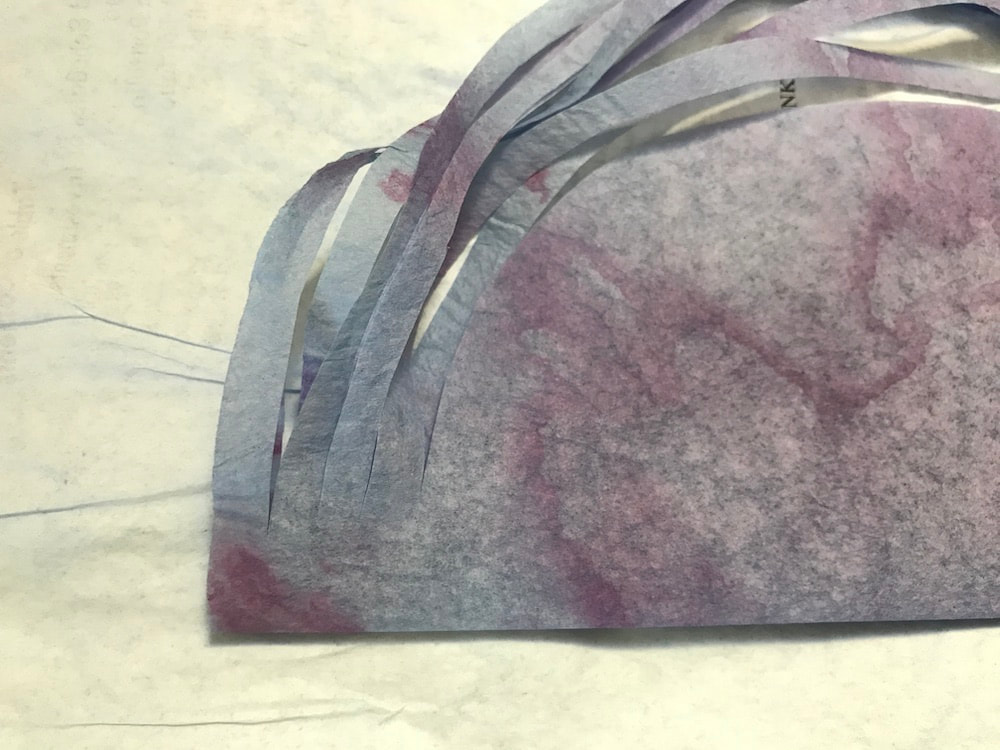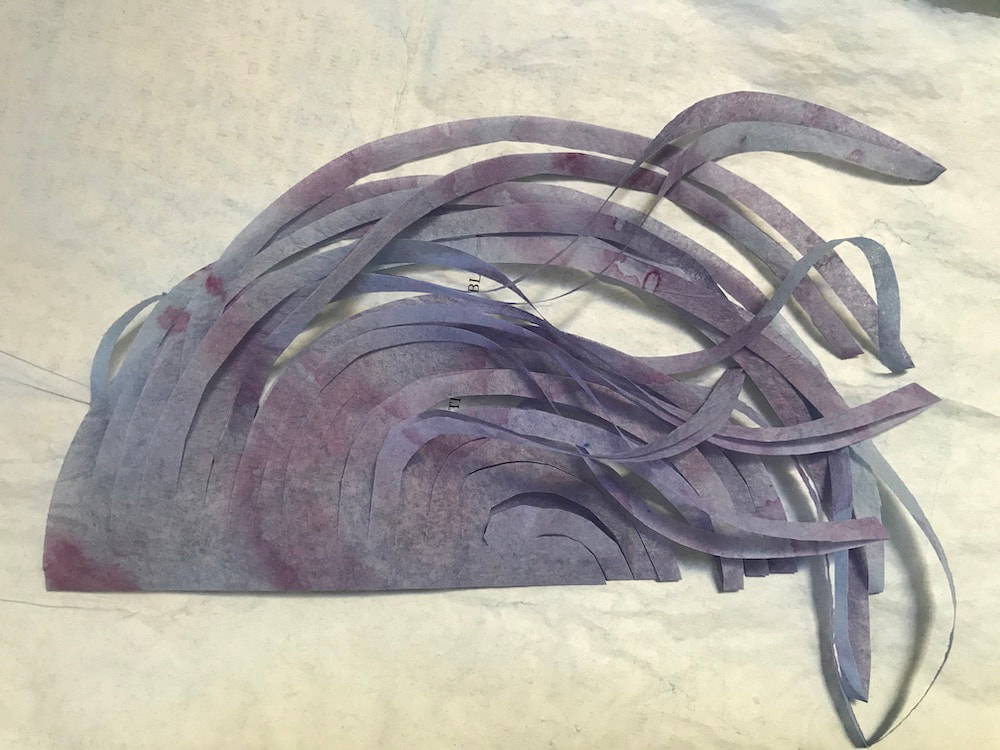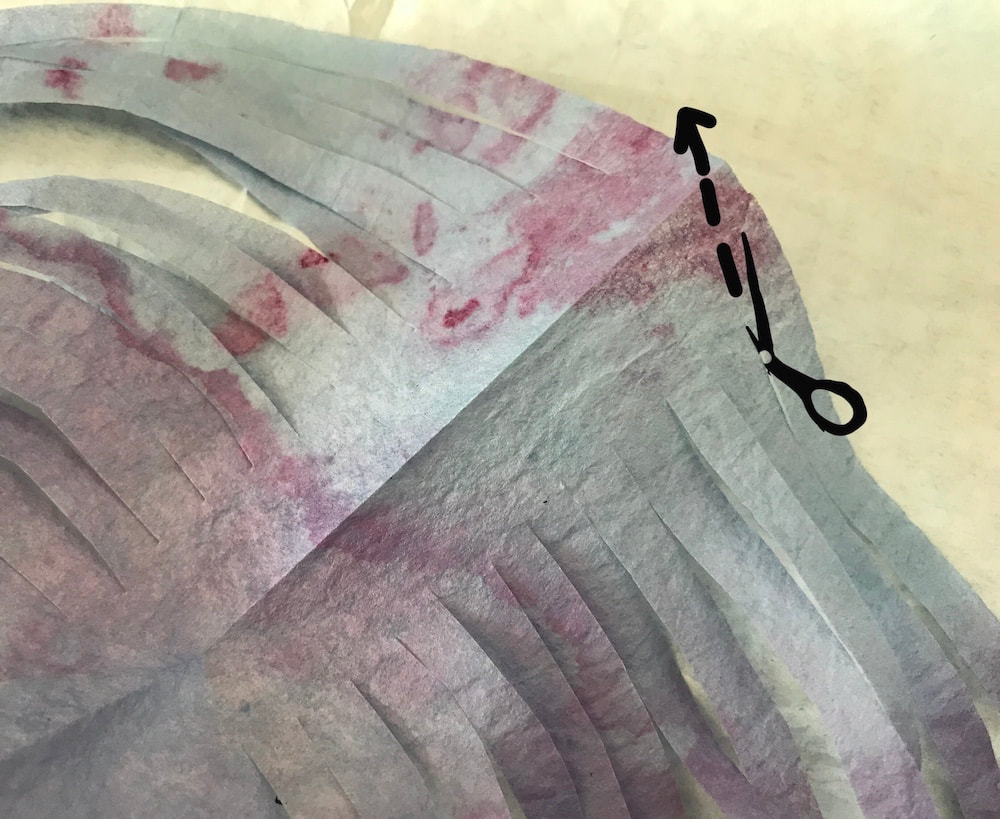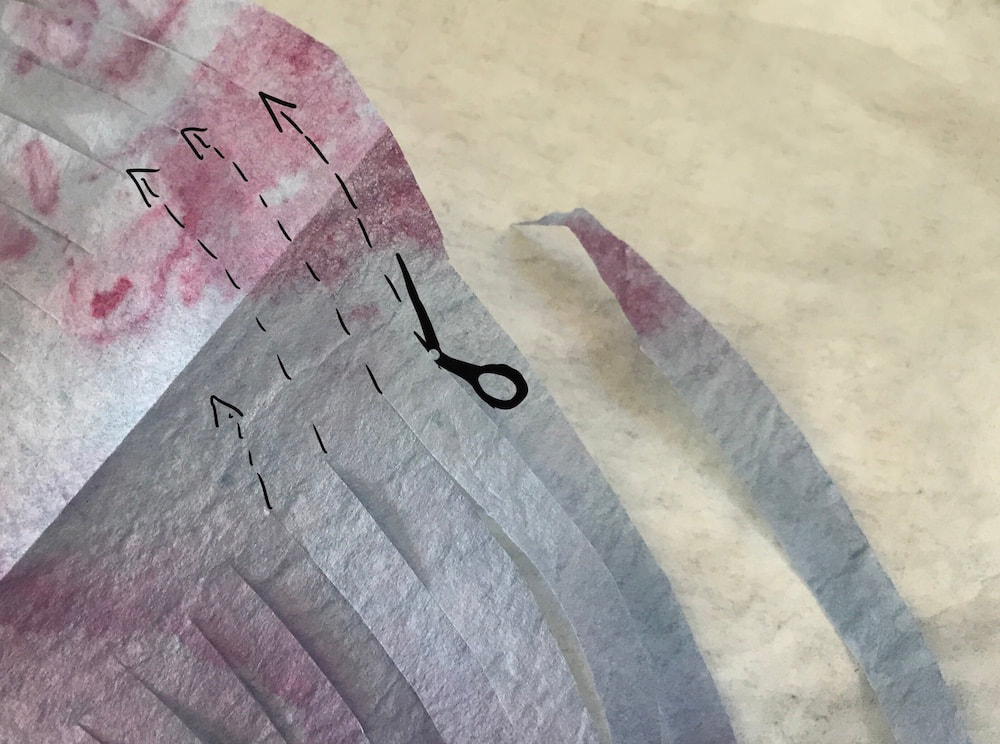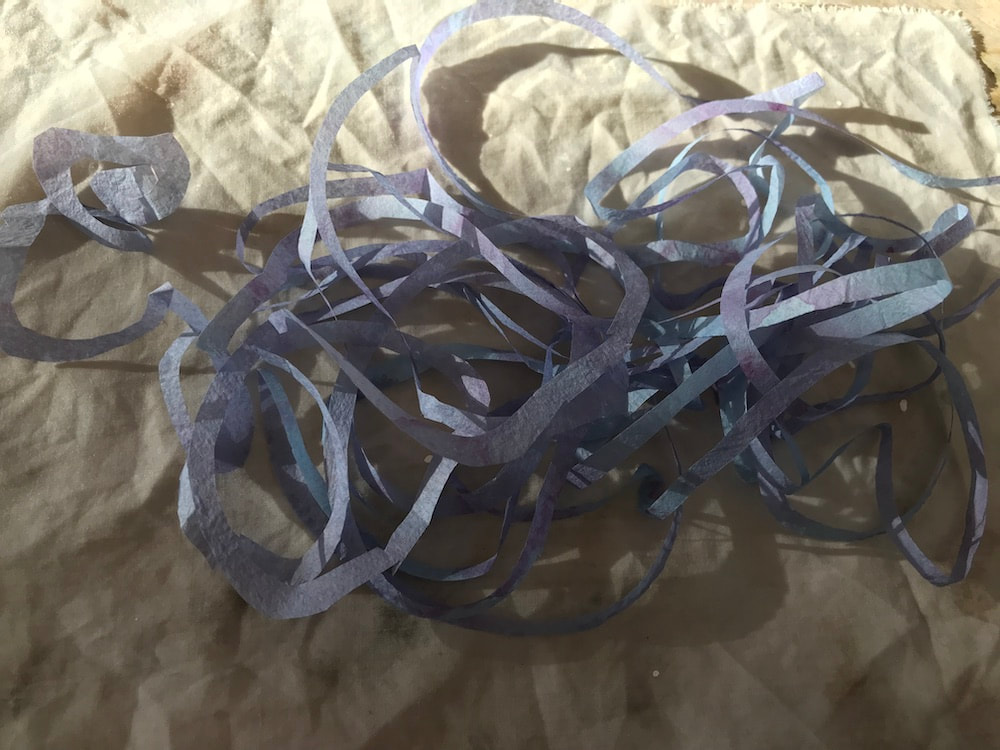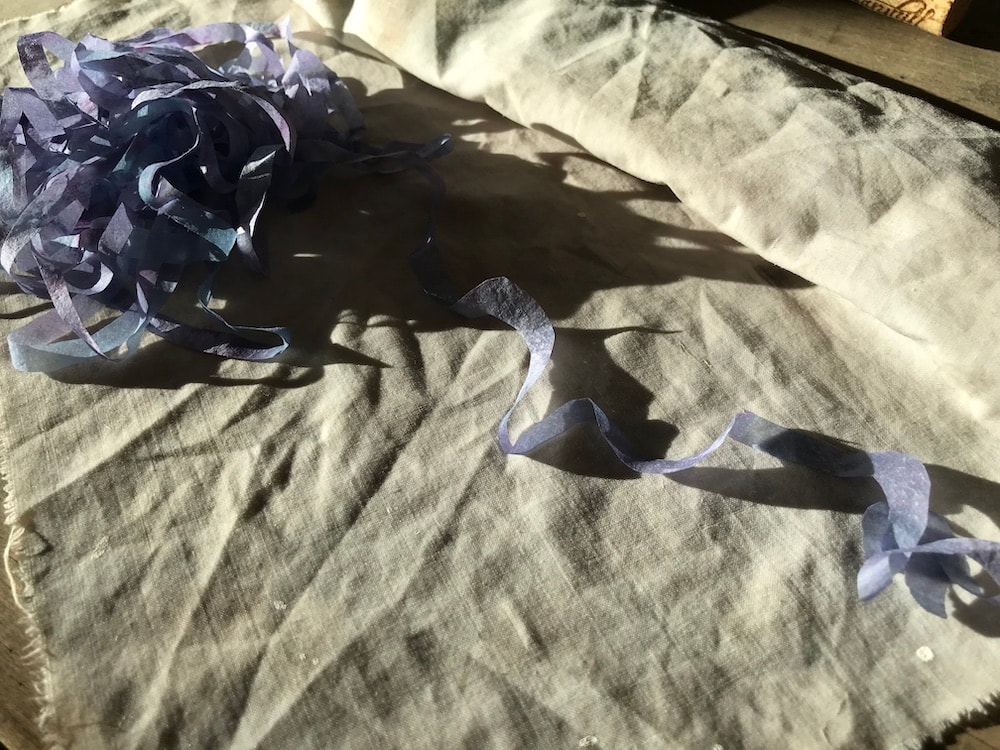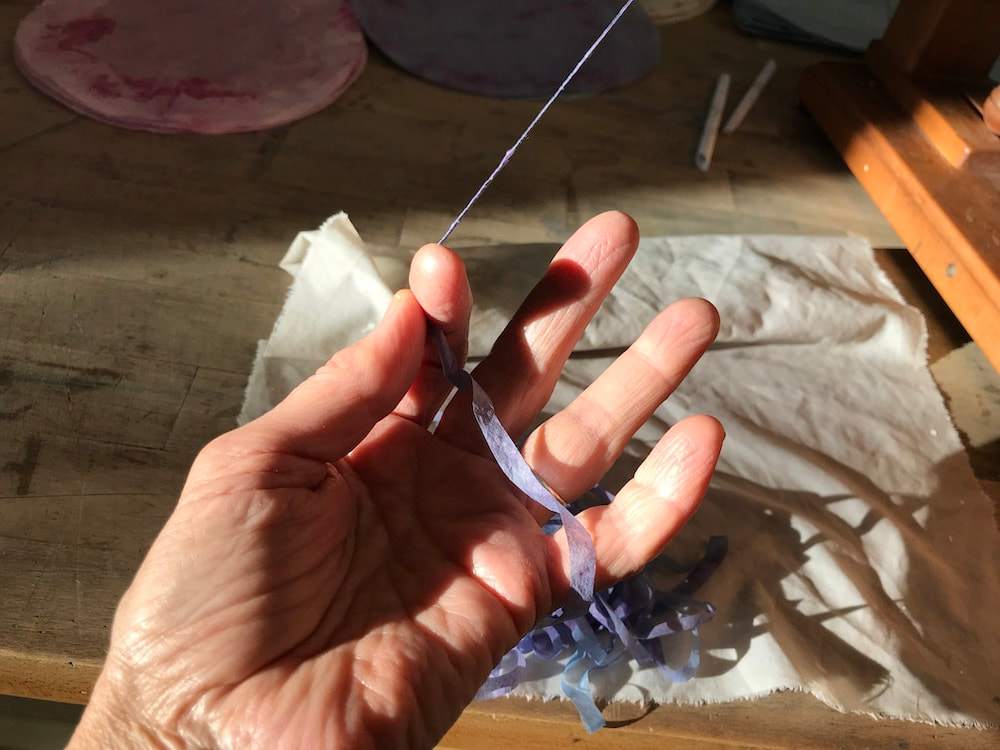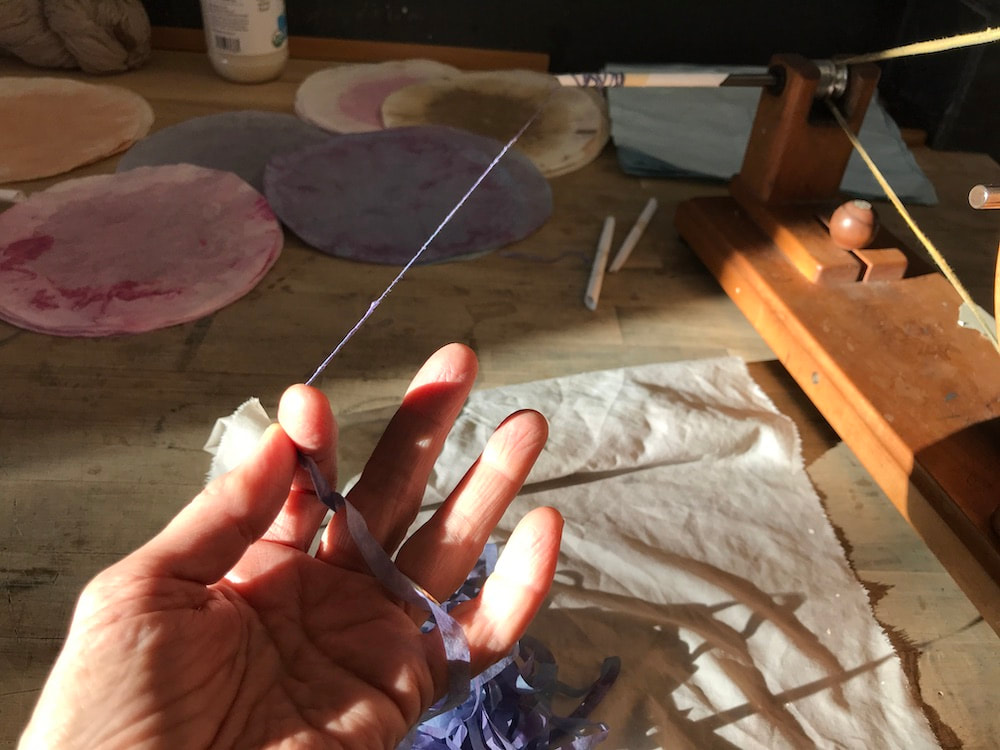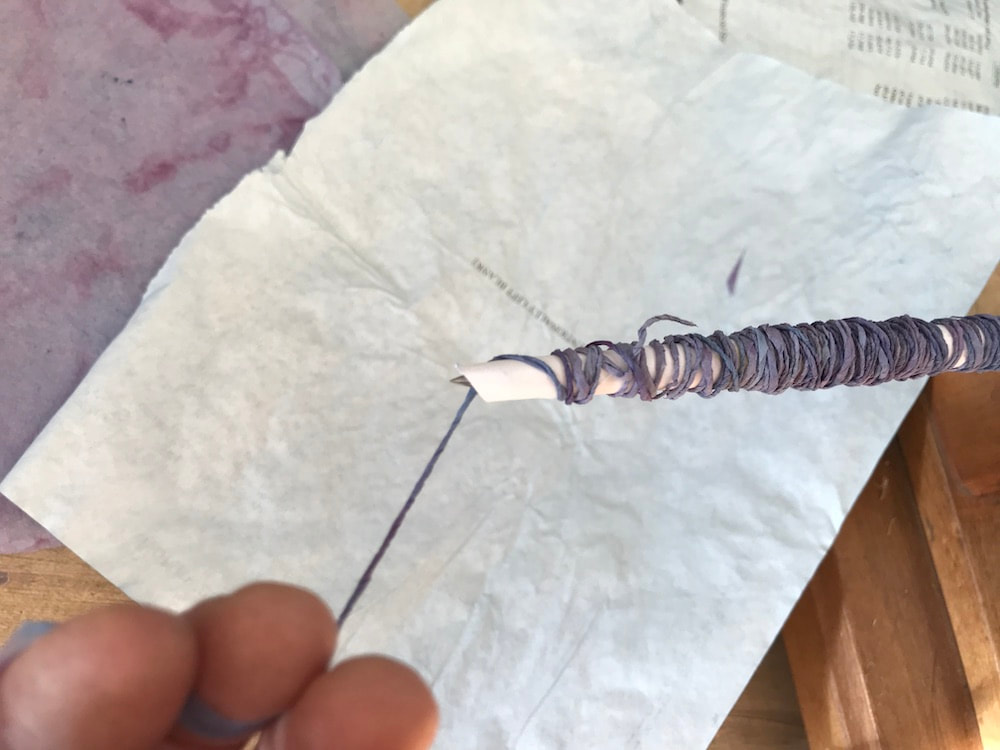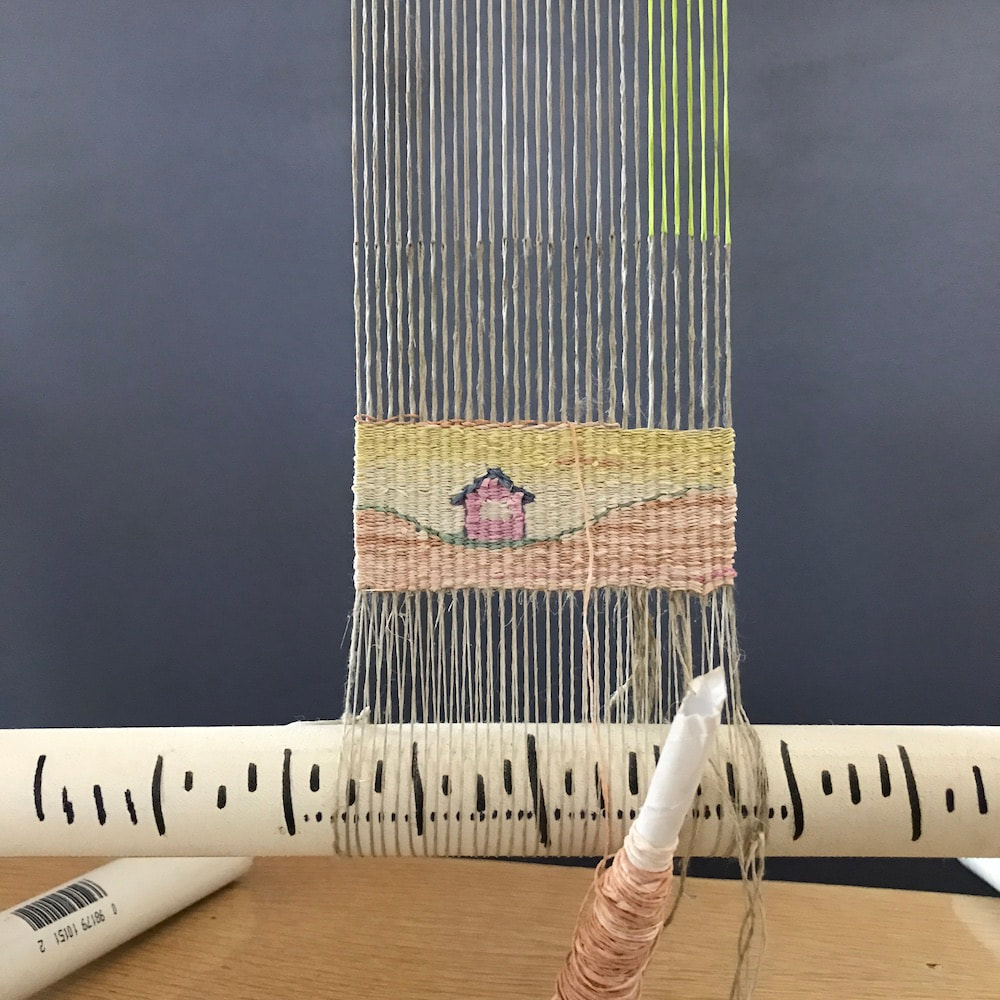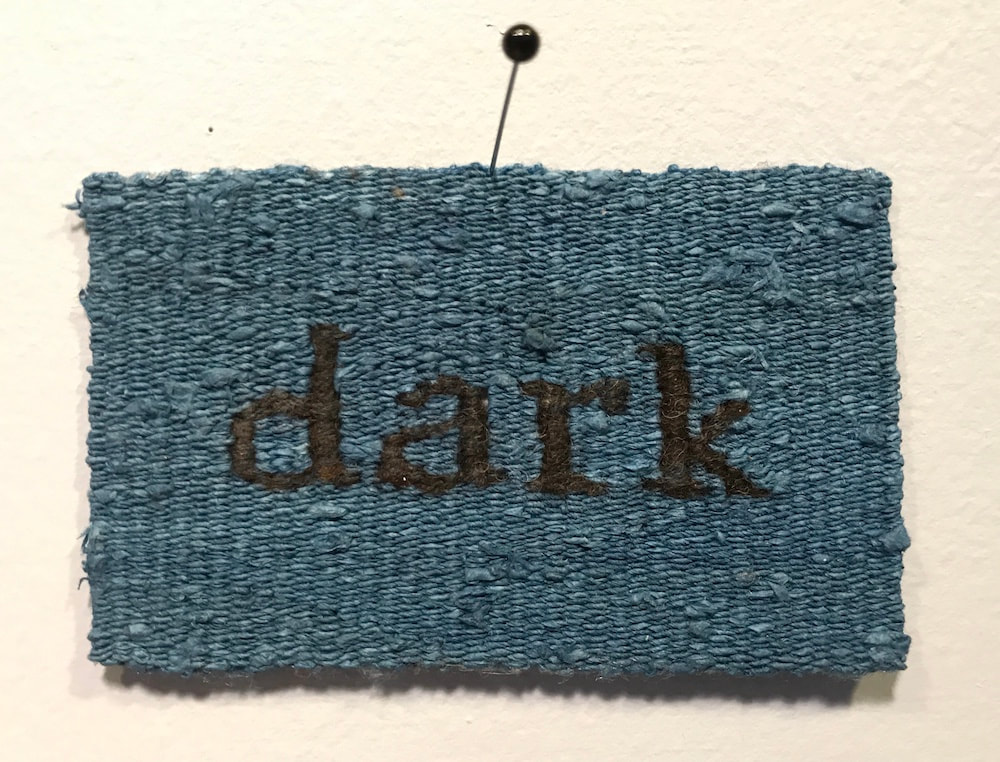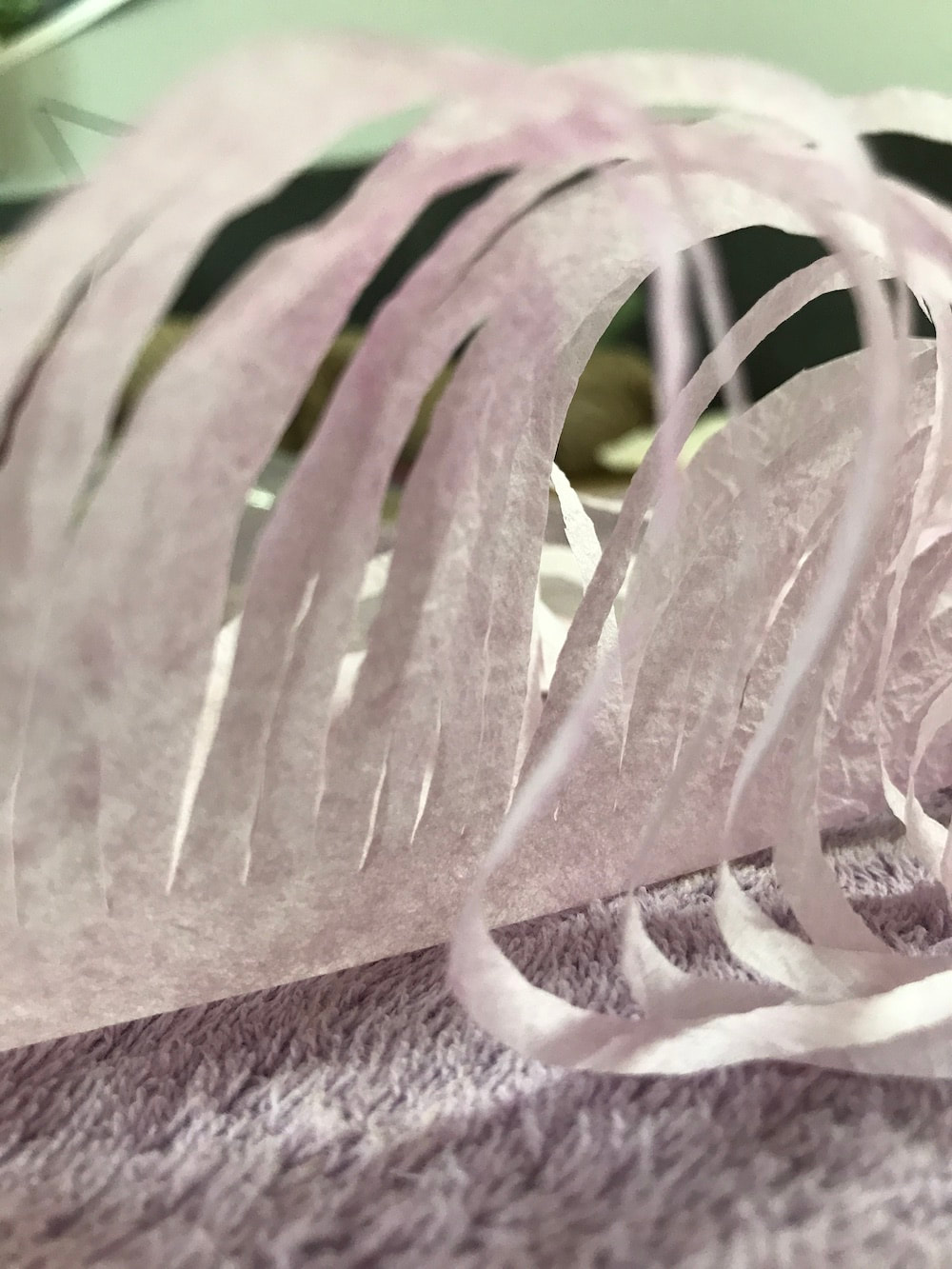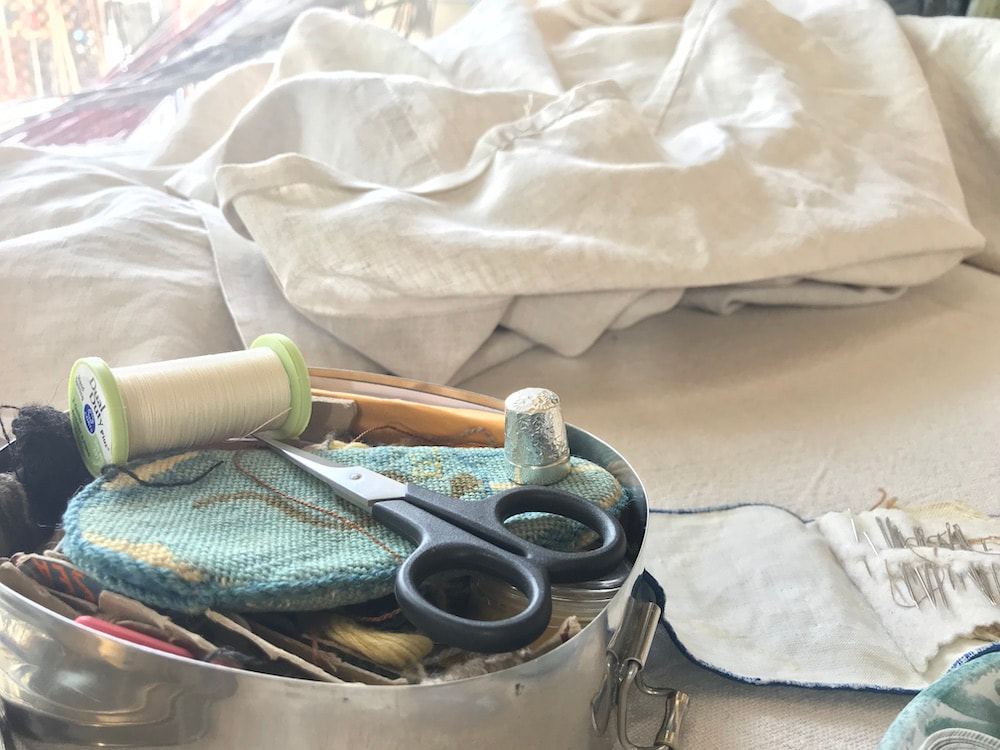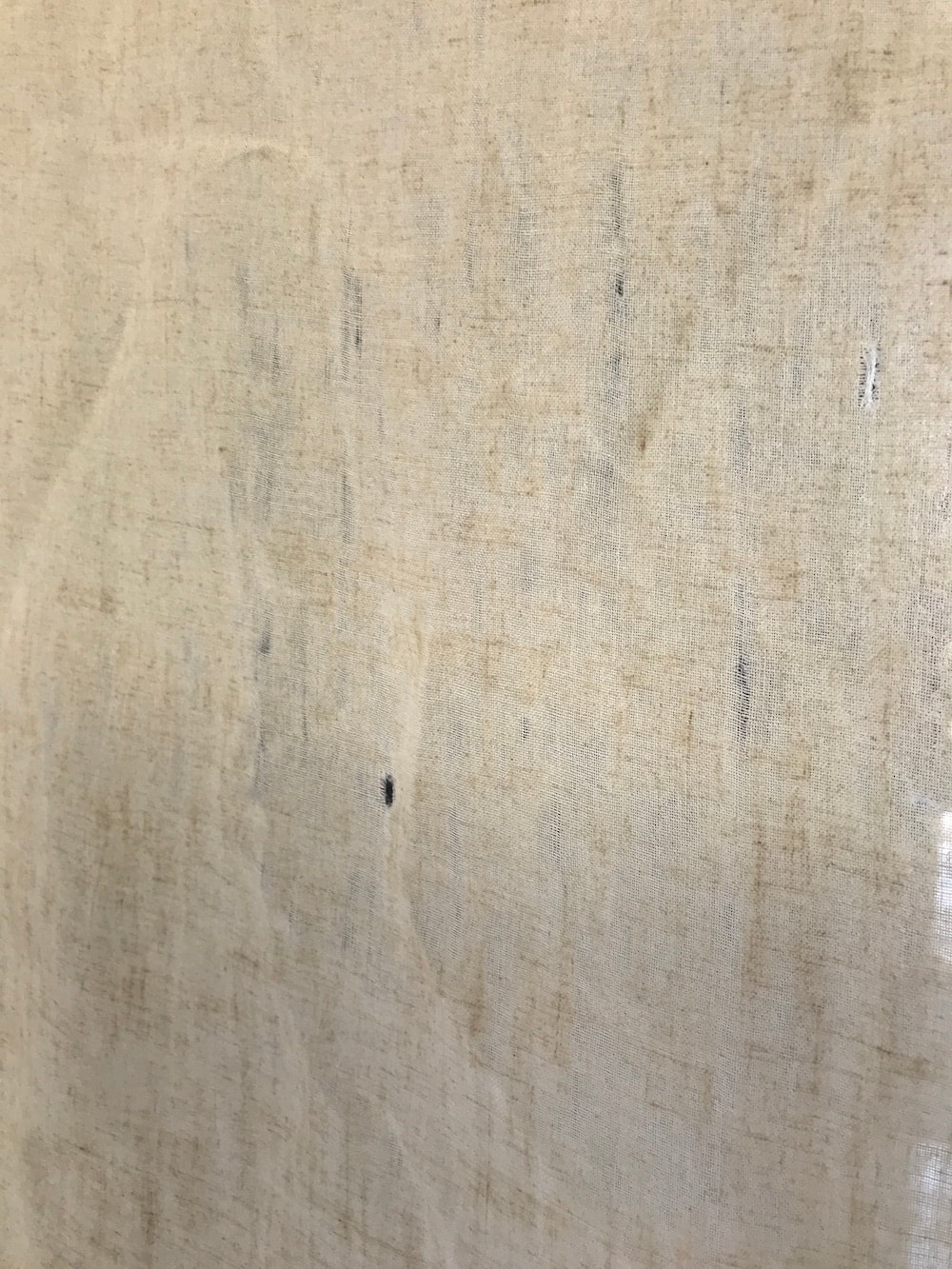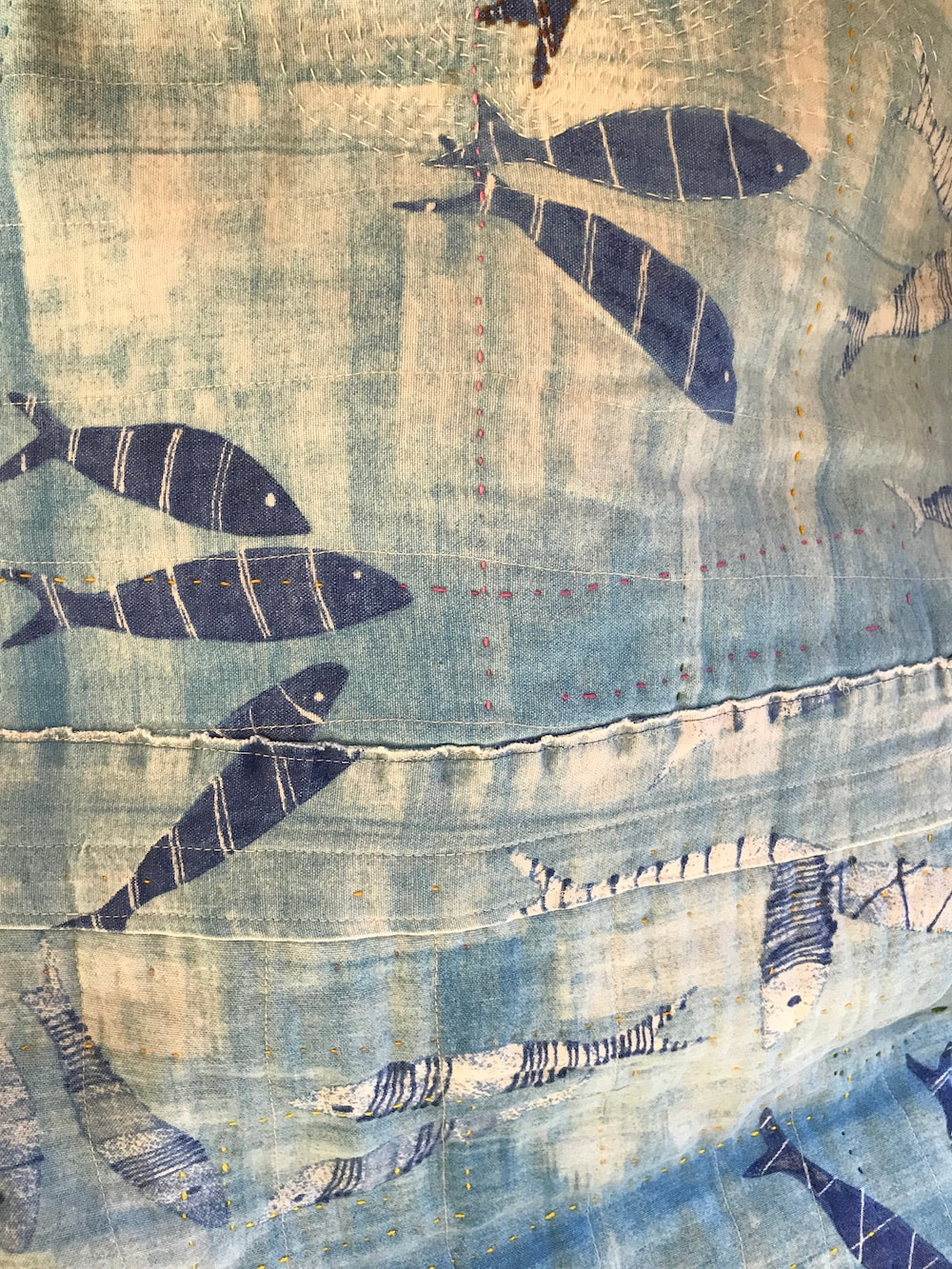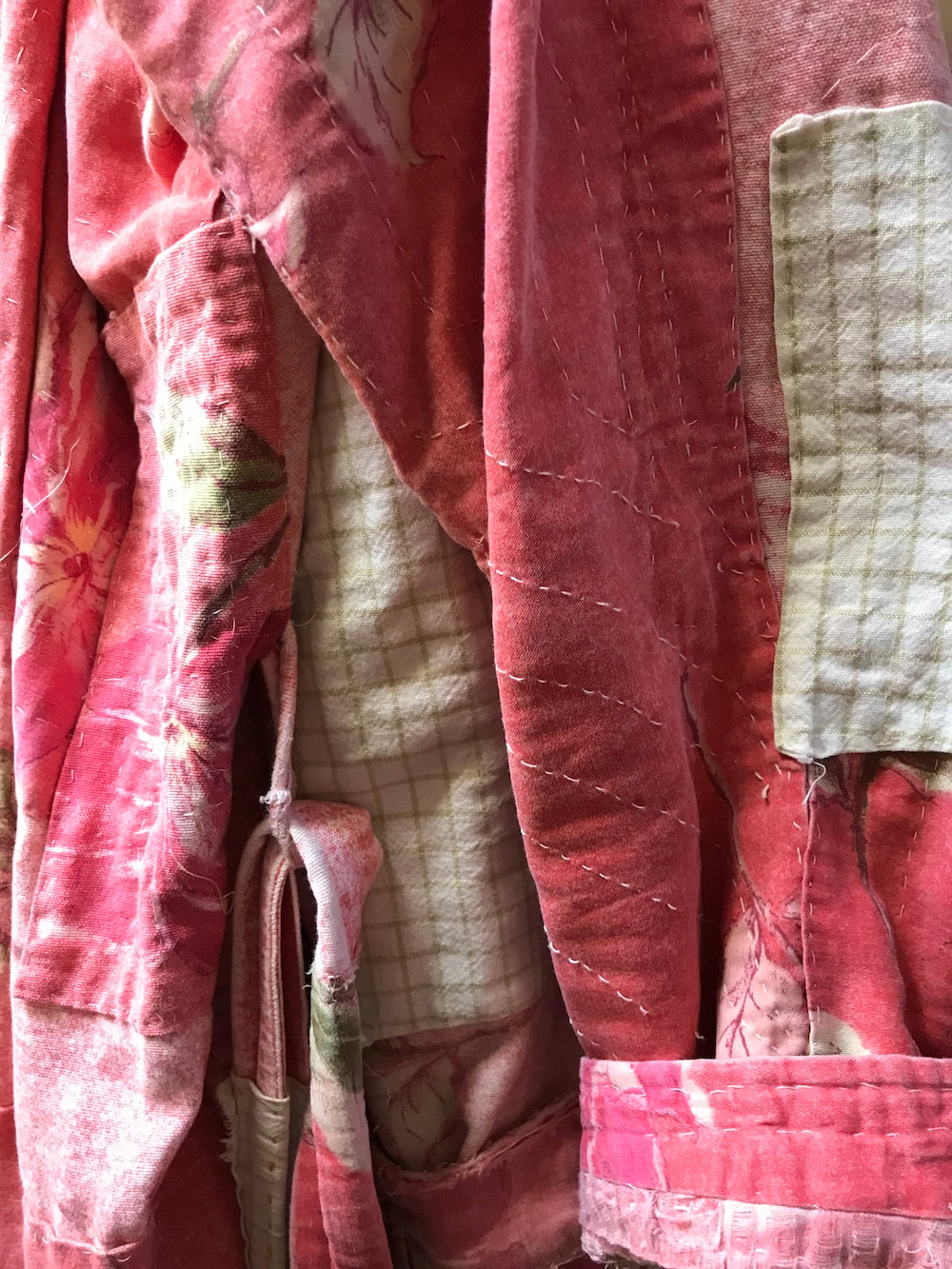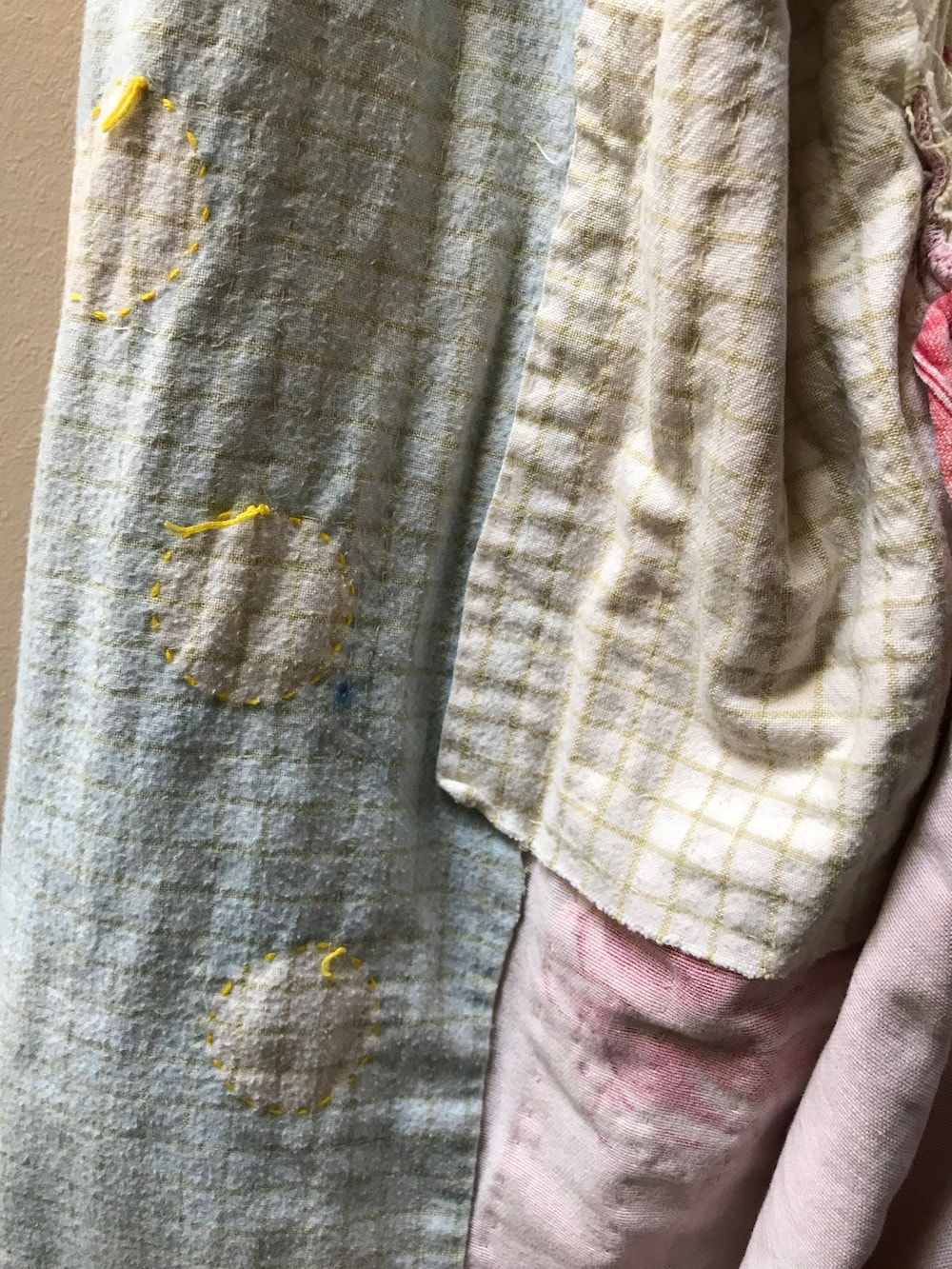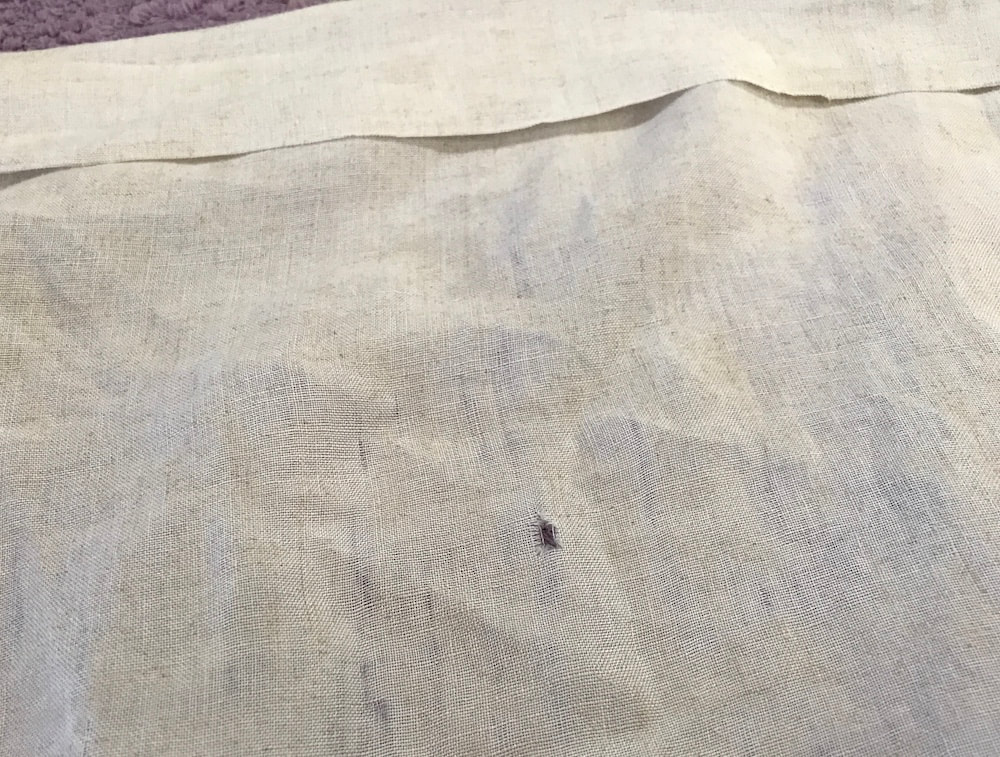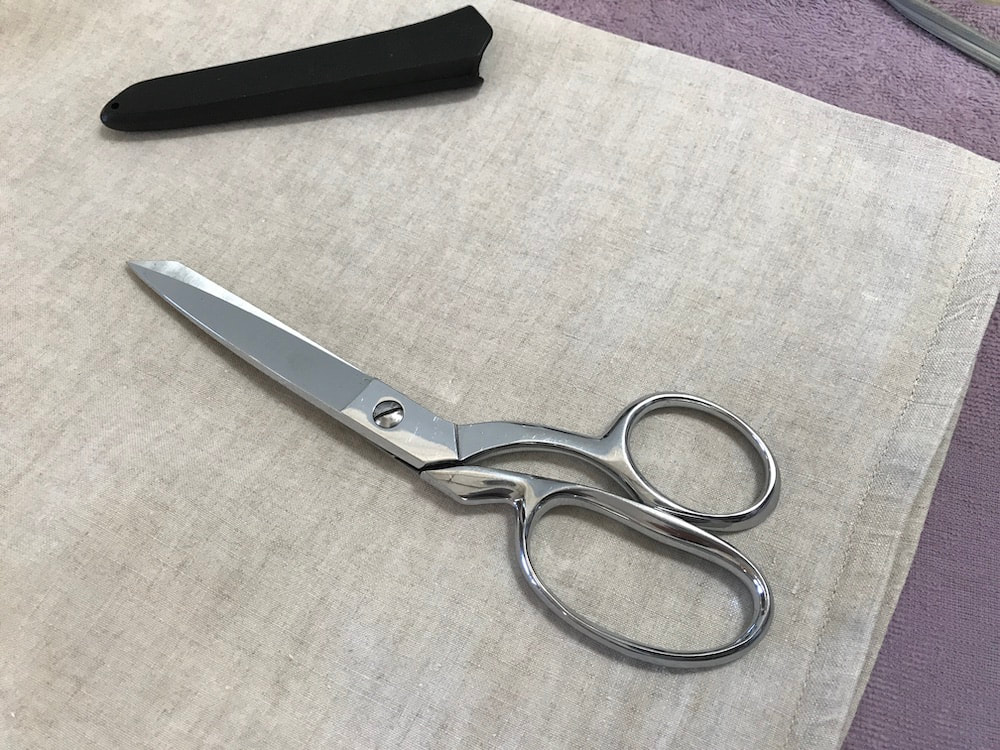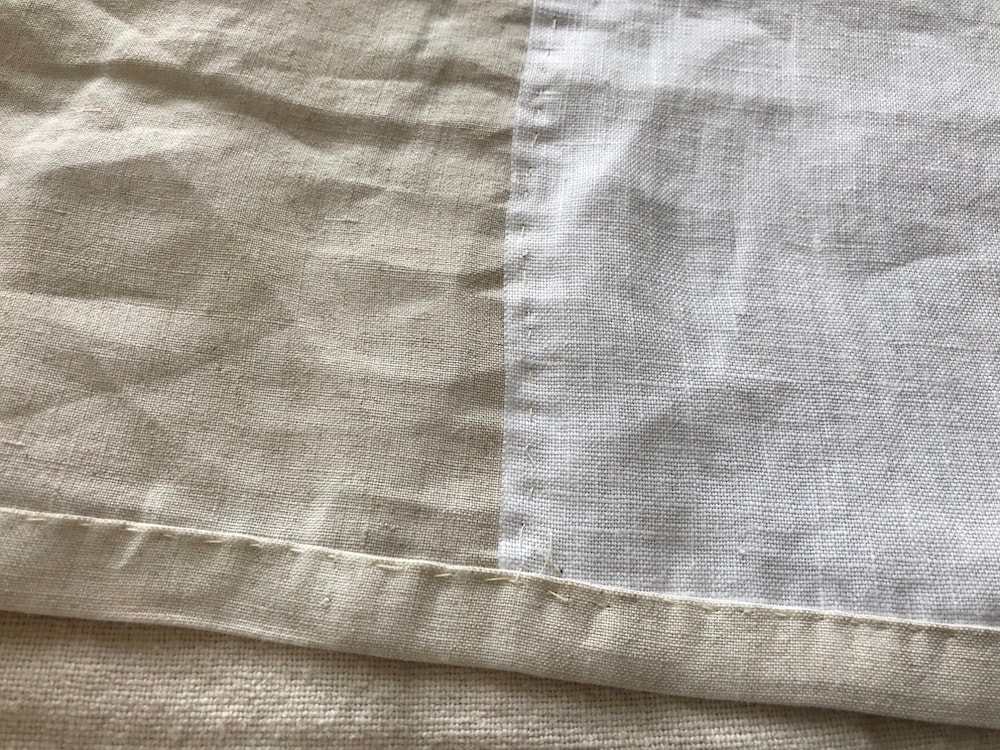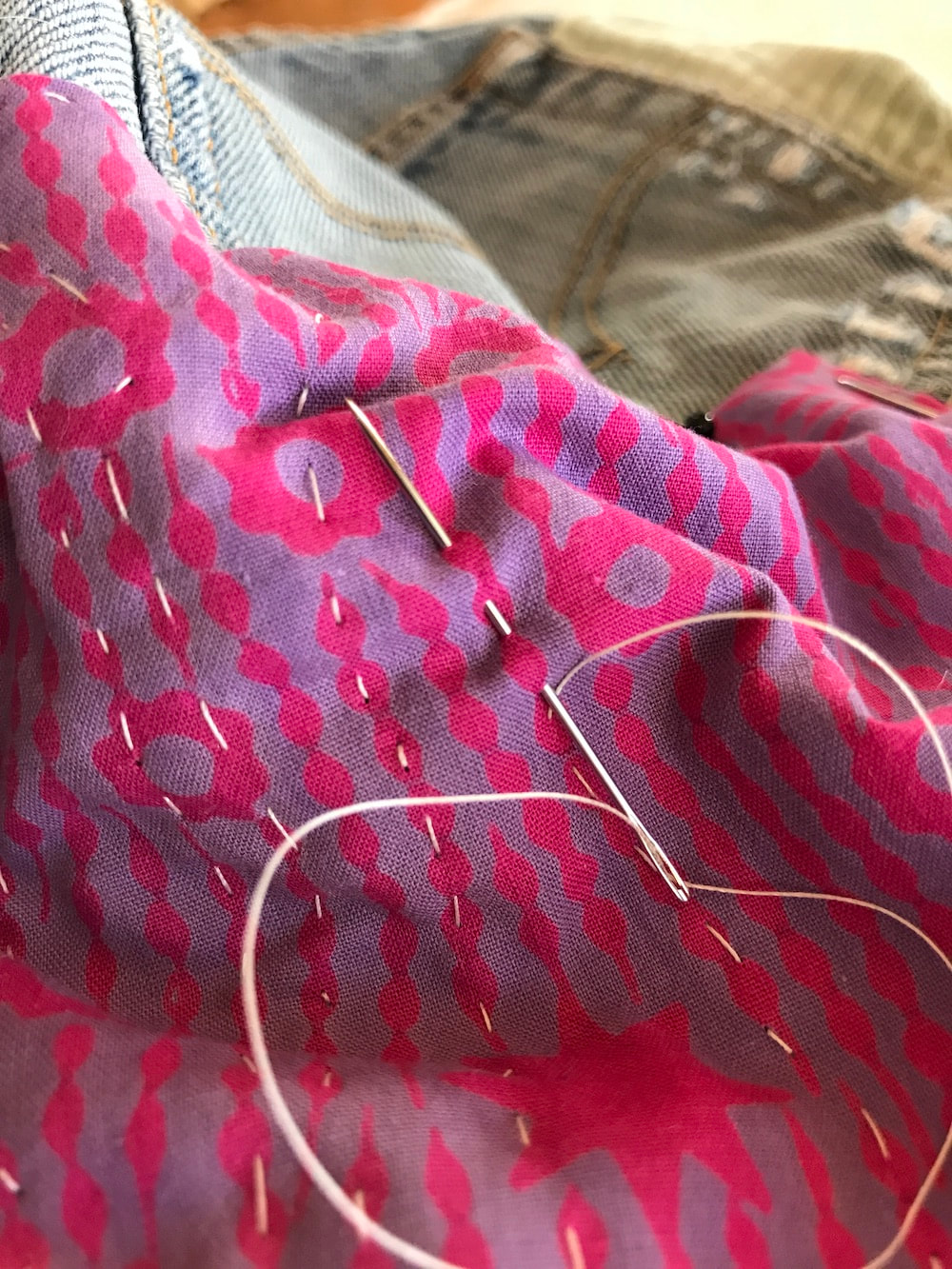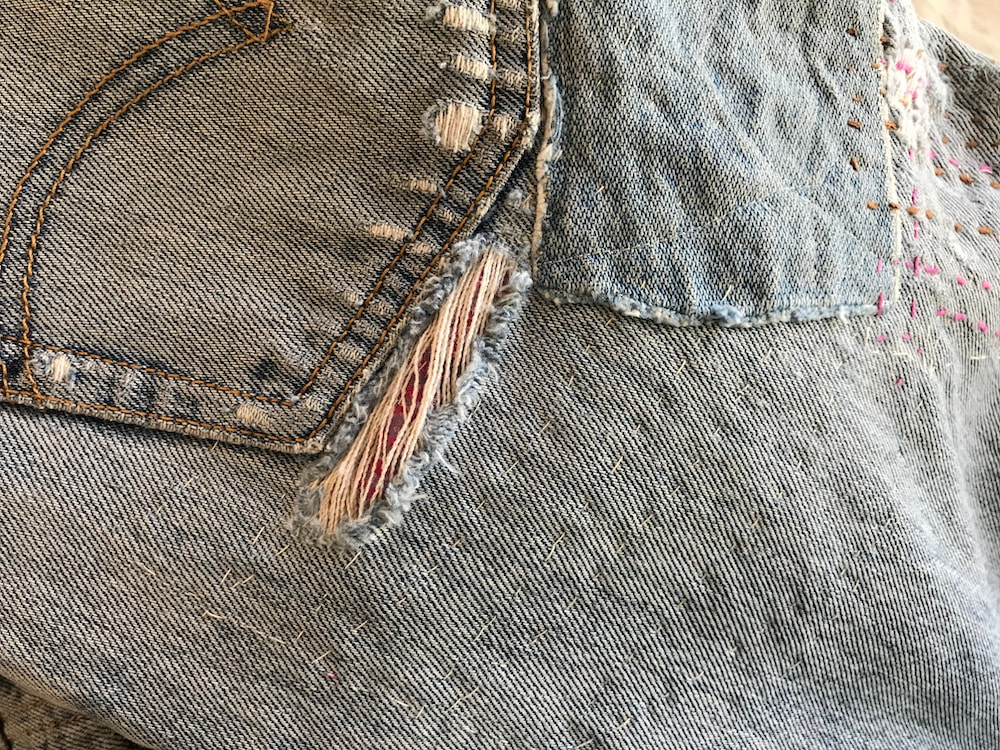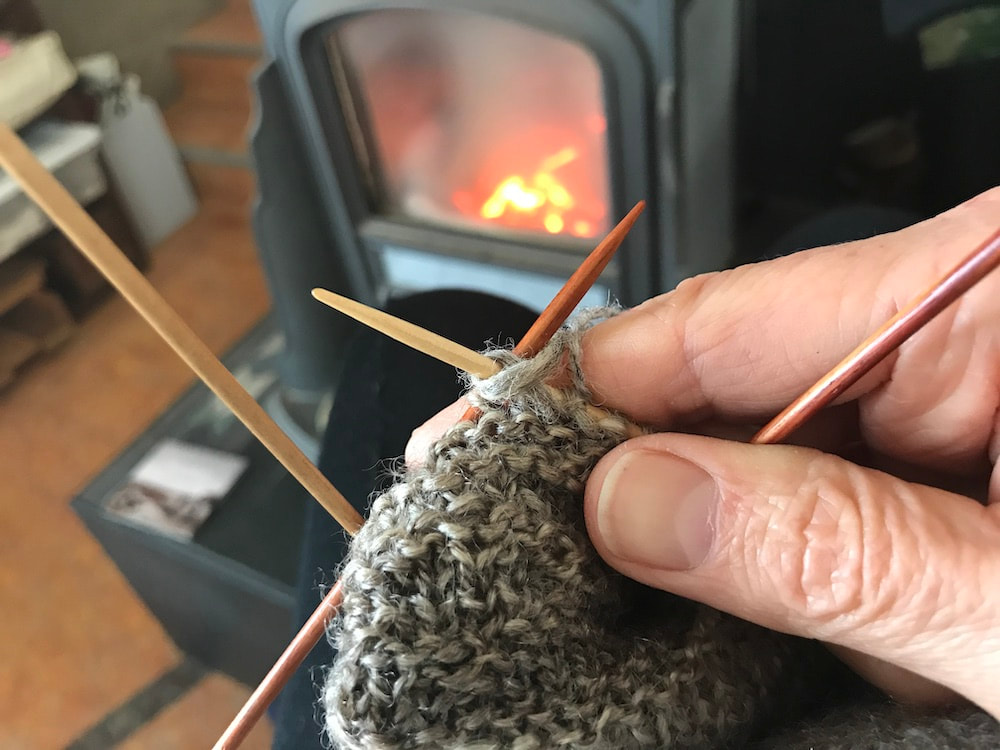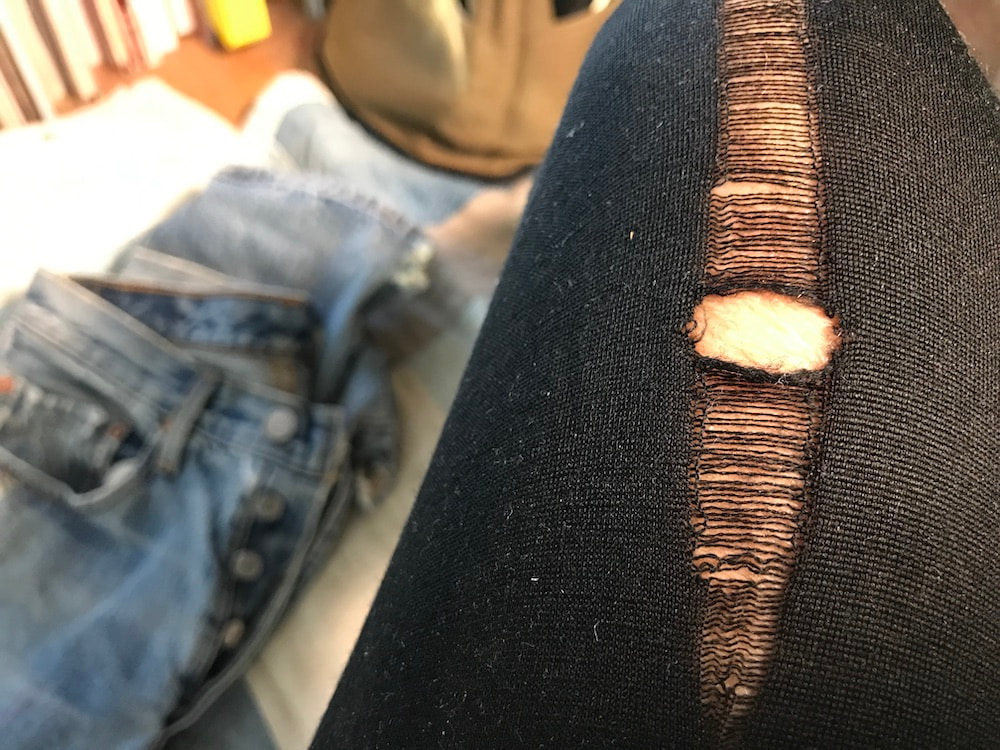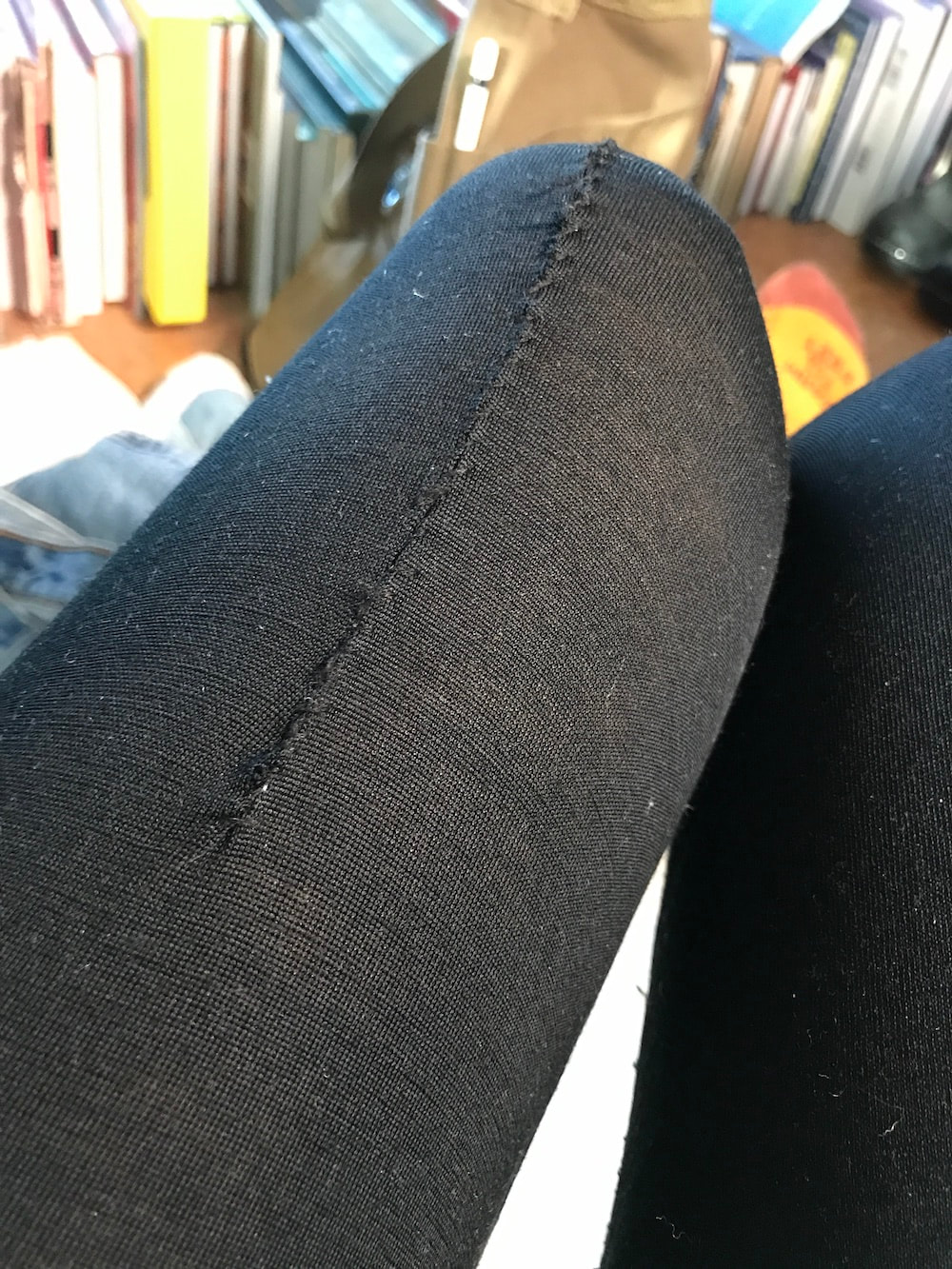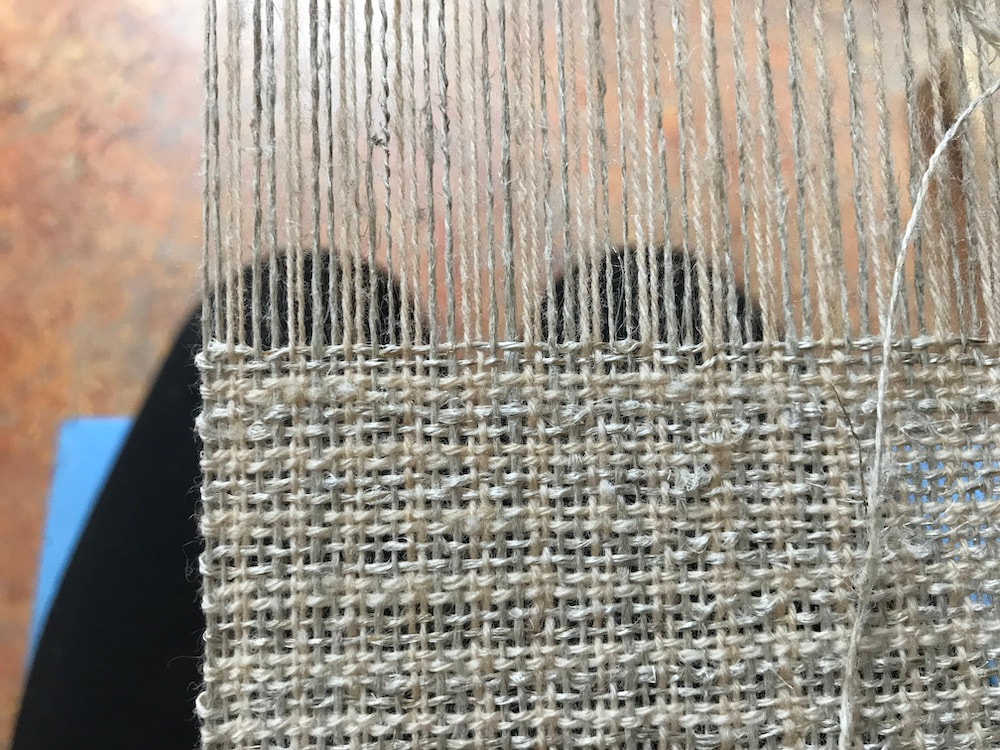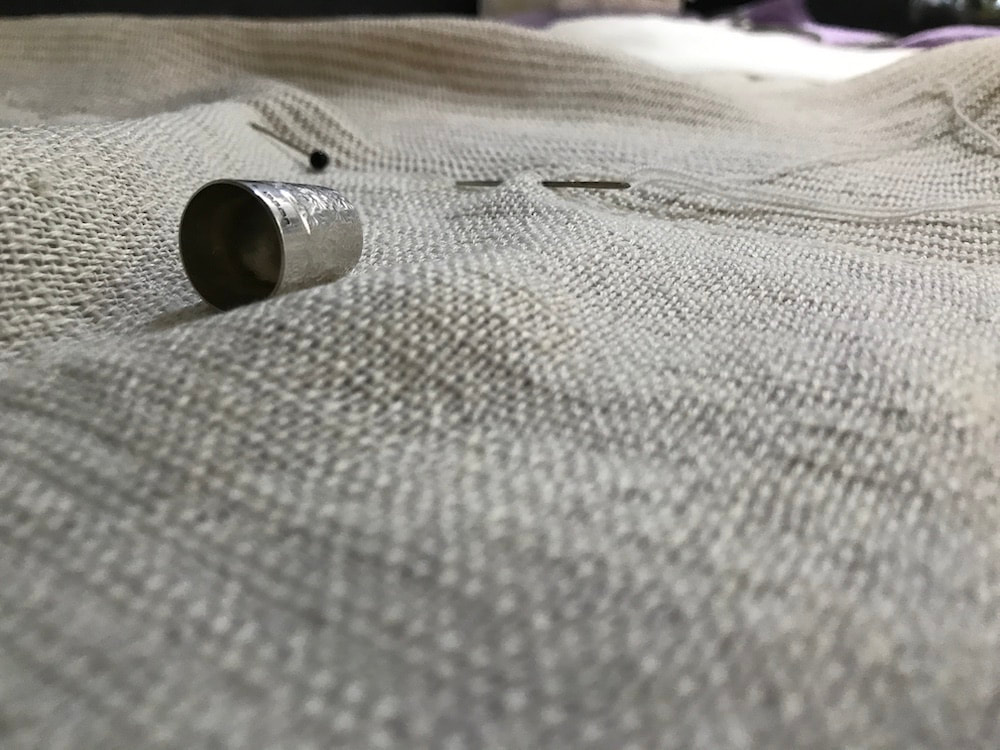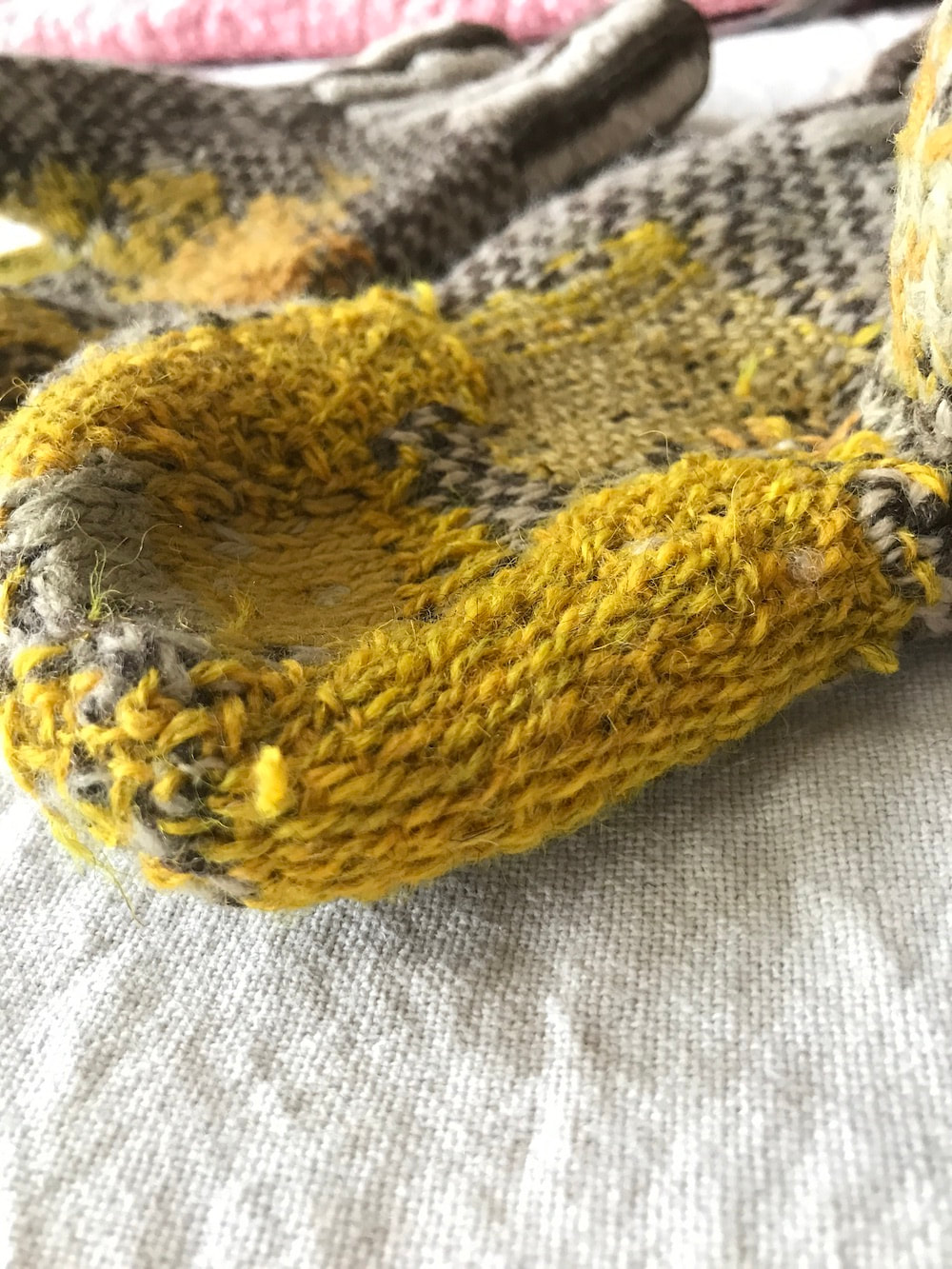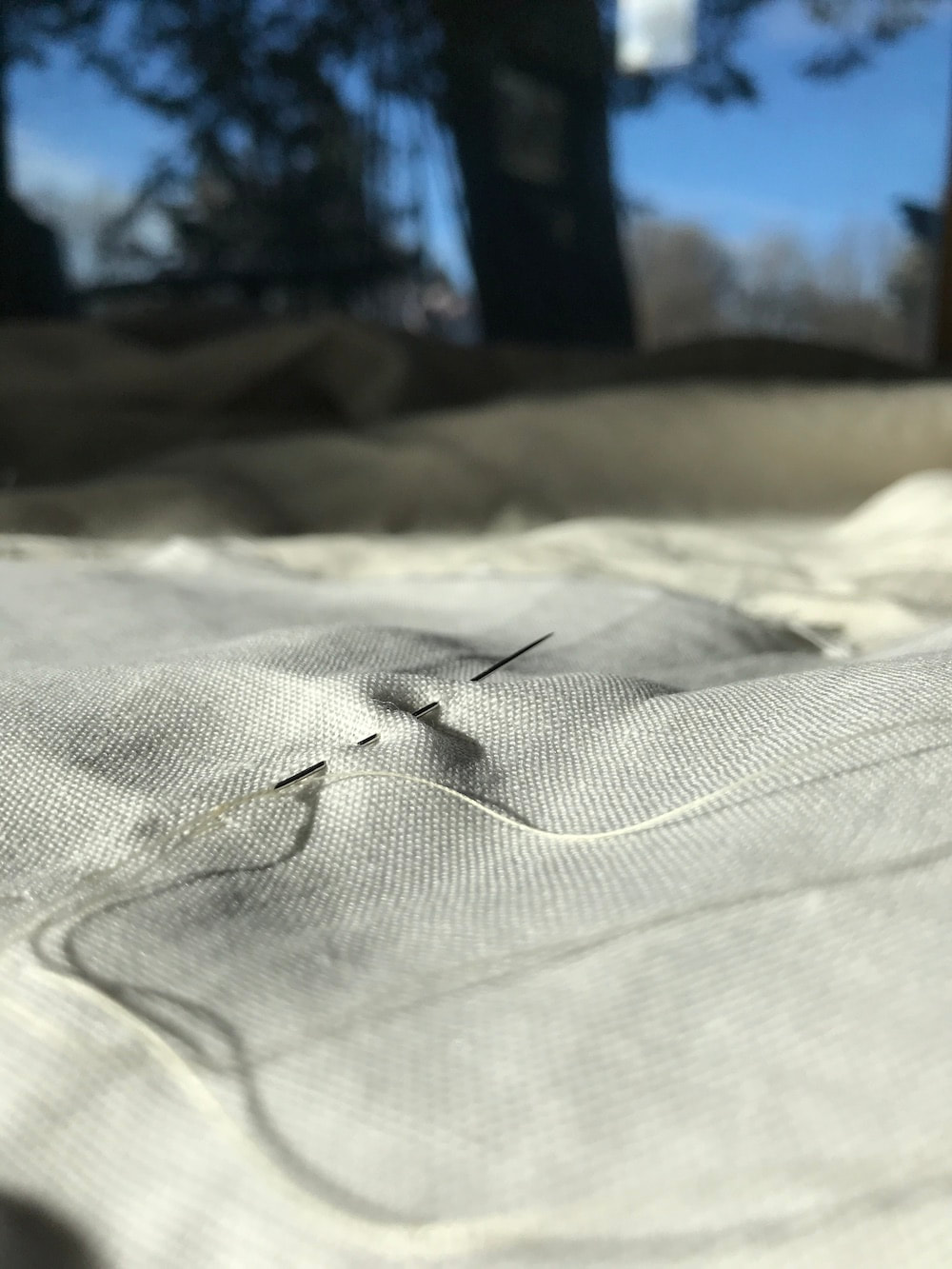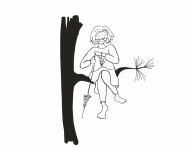because I'm having a great time
with this garment.
I got to make samples:
-hand spun linen,
-hand spun wool (for linsey woolsey),
-mill spun linen,
-walnut dyed (but not hand spun) cotton,
--a commercial blend of cotton, linen, nettle and silk,
In the photo above,
I'm re-sleying the rigid heddle,
moving from a 12 to a 15 dent.
(Both ends of the cloth are lovely and astonishingly different)
are the 100% hand spun linen
and hand spun linesey-woolsey,
but I haven't yet spun enough fine linen
so I decided to keep building working on that
while beginning on this first non-wool skirt:
--a combination of the walnut dyed cotton
and Nettle Grove (cotton, linen, nettle and silk).
I chose this last in part because of the name,
(though of course there is hardly any actual nettle fiber in it),
in part because there it was at the Yarn Underground (my LYS),
and mostly because it is pleasant to knit with --
and essential feature of Sarah-Dippity skirt materials.
from Backstrap Dialogues
I wound my longest Backstrap warp yet (four+ yards)
threaded the 15 dent rigid heddle,
plunked my butt on the floor,
and started weaving.
and a few simple tools--
drape it against my legs,
and get all excited about actually putting it on.
But first
--three wedges to knit
(a couple of weeks of evening reading time),
of whether the knitted wedges
should go over or under the woven panels
(I chose under),
--and finally, yesterday afternoon,
trying it on (see the beginning of this post),
at which point I learned that I do, indeed,
need to knit a fourth wedge.
-the Great Closure Debate
(buttons? zipper? snaps?)
-The Waistband
(I think this skirt might want one,
but do I want to weave it
and if so,
how?)
and
-Final Fitting
Oh, the DRAMA.
Until then, here are
a few amazing Sarah-Dippity links:
-Jaya on Instagram
-Peg on her Blog
-An entire Ravelry Thread
-#sarahdippityskirt
(a hash tag I hope any of you making skirts and on instagram, will use)
What else? Do let me know.
Thanks everyone!
